-
Ukrainian drones strike Russian navigation equipment plant in Cheboksary, sparking major fire
A series of explosions rocked the city of Cheboksary in the Chuvash Republic of Russia overnight on Monday, June 9. The Ukrainian General Staff announced that the Unmanned Systems Forces, in collaboration with other units of the Armed Forces of Ukraine, unleashed a drone attack on the VNIIr-Progres facility. This facility is known for producing navigation equipment, including adaptive 'Komet' antennas.
These antennas are reportedly used by Russian forces in Shahed-type strike drones, unified planning and correction modules for guided aerial bombs, among other weaponry. At least two Ukrainian drones hit the facility, sparking a large-scale fire.
In response, Russia implemented a "Blanket" plan, restricting airport operations in four cities: Nizhny Novgorod, Tambov, Kazan, and Saratov. Andriy Kovalenko, head of the Ukrainian National Security and Defense Council's Center for Countering Disinformation, noted that the 'Komet' satellite navigation module, compatible with GLONASS/GPS, is used by occupiers in weaponry like the Kalibr, Iskander-M, Kh-69, Kh-101 missiles, and Lancet and Orlan-10 drones.
He highlighted that after the drone strike, the Progres facility has ceased operations indefinitely. Furthermore, on the Savasleyka airfield in the Nizhny Novgorod region, Ukrainian defenders have allegedly destroyed two Su-30/34 and MiG-31 fighter jets.
-
New large-scale POW exchange: Ukrainian defenders return home #shorts
-
Ukraine begins first stage of prisoner swap under Istanbul agreement

Editor’s note: This is a developing story and is being updated.
Ukraine has begun a large prisoner exchange with Russia as part of a deal reached during recent peace talks in Istanbul, President Volodymyr Zelensky confirmed on June 9.
“Ukrainians are coming home from Russian captivity,” Zelensky said in a statement. “Today the exchange began and will continue in several stages over the coming days. Among those being returned now are wounded and severely wounded prisoners, as well as those under 25."
The swap marks the first stage of the agreement negotiated at the second round of direct Russia-Ukraine peace talks in Istanbul on June 2.
The Coordination Headquarters for the Treatment of Prisoners of War said the first group of released prisoners includes personnel from Ukraine’s Navy, Ground Forces, Air Force, National Guard, Border Guard Service, Territorial Defense, and State Special Transport Service.
Among those freed are defenders of Mariupol who had spent more than three years in captivity. All those returned in this stage are enlisted and noncommissioned soldiers, officials said.
Ukraine expects to exchange 500 POWs in next swap with Russia, Zelensky saysUkraine will bring home a total of 500 prisoners of war (POW) from Russian captivity in a prisoner exchange with Russia on June 7 and 8, President Volodymyr Zelensky said in a meeting with journalists on June 4 attended by the Kyiv Independent.The Kyiv IndependentMartin Fornusek

-
Russia claims offensive in Dnipropetrovsk aimed at creating 'buffer zone,' Ukraine denies reports of incursion
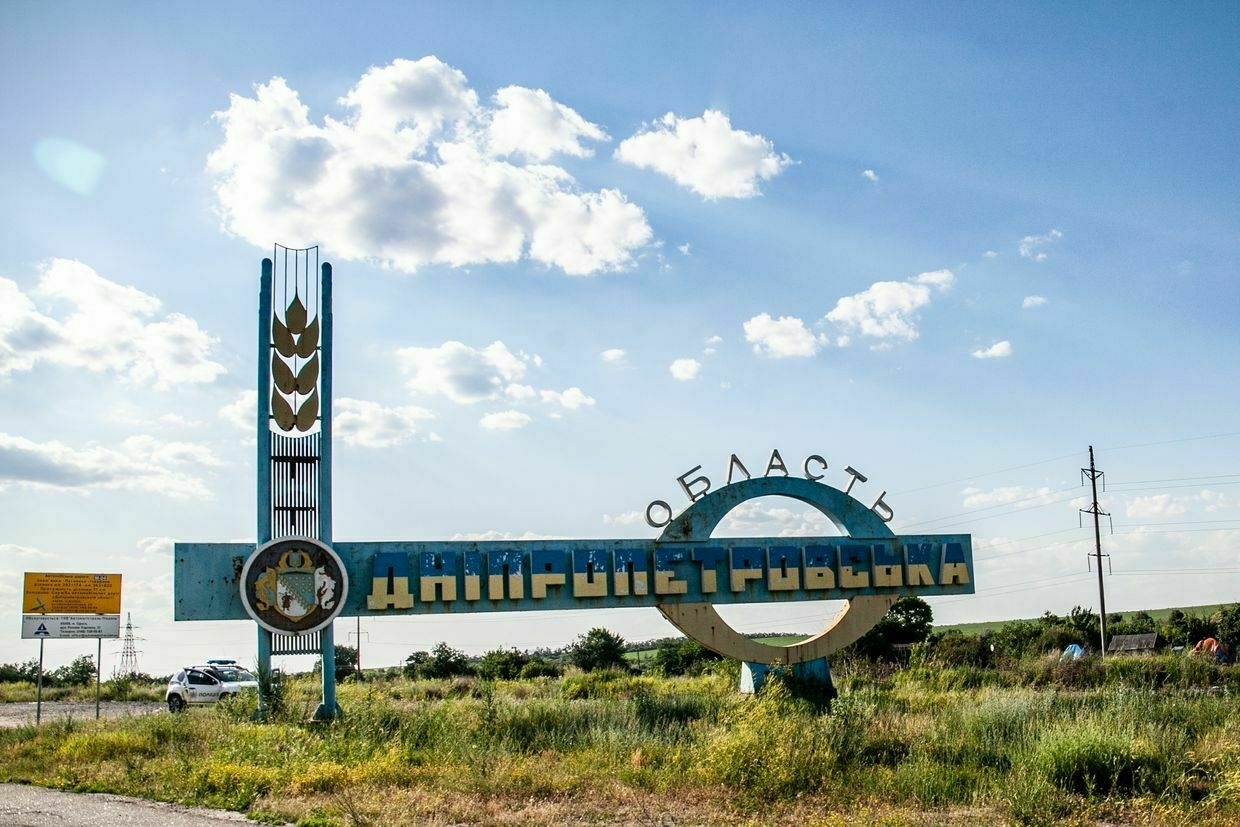
Russian forces are conducting their offensive in Ukraine’s Dnipropetrovsk Oblast as part of efforts to create a “buffer zone” on Ukrainian territory, Kremlin spokesperson Dmitry Peskov said on June 9, according to Russian state-controlled media.
Peskov’s comments allude to Russia’s claims that neighboring Ukrainian Donetsk Oblast belongs to Moscow. The claim is based on Russia’s proclaimed annexation of the region in September 2022.
Kremlin spokesperson comments follow weeks of renewed Russian advances in Donetsk Oblast and President Vladimir Putin’s May 22 statement that Moscow is working to establish a “security buffer zone” along Ukraine’s borders with Kursk, Bryansk, and Belgorod oblasts.
Ukrainian officials denied Russia’s latest claims of progress in Dnipropetrovsk Oblast.
“As of the morning of June 9, all Russian information, including Peskov’s statements, about an offensive in Dnipropetrovsk Oblast does not correspond to reality,” said Andrii Kovalenko, head of Ukraine’s Center for Countering Disinformation.
Operational Command South reported on June 8 that Russian troops are continuing attempts to break into Dnipropetrovsk Oblast but described the situation as “tense” rather than indicating any successful advance.
The Russian Defense Ministry claimed on June 8 that its forces had entered Dnipropetrovsk Oblast. Ukrainian officials immediately rejected the assertion.
Viktor Trehubov, spokesperson for Ukraine’s Khortytsia group of forces, also called the reports false, telling CNN that Russian forces had not advanced from the Pokrovsk or Novopavlivka directions, where the three oblasts of Donetsk, Zaporizhzhia, and Dnipropetrovsk converge.
Since 2014, Russian aggression has heavily impacted Donetsk Oblast, while Dnipropetrovsk Oblast has remained free from confirmed ground incursions. Ukraine rejected similar Russian claims in May, when officials debunked allegedly fabricated photos purportedly showing Russian troops in the region.
Despite this, Dnipropetrovsk has faced frequent Russian missile and drone attacks throughout the full-scale war. The region began mandatory evacuations from four front-line villages in April as a precaution.
Ukraine says it hit Russian MiG-31, Su-30/34 fighter jets following attack on airfieldThe overnight strike targeted the Savasleyka airfield in Russia’s Nizhny Novgorod region, which the Kremlin uses to launch MiG-31K jets armed with Kinzhal hypersonic missiles, according to the General Staff.The Kyiv IndependentAnna Fratsyvir

-
NATO's Rutte calls for 400% increase in air defenses to counter Russia, Bloomberg reports
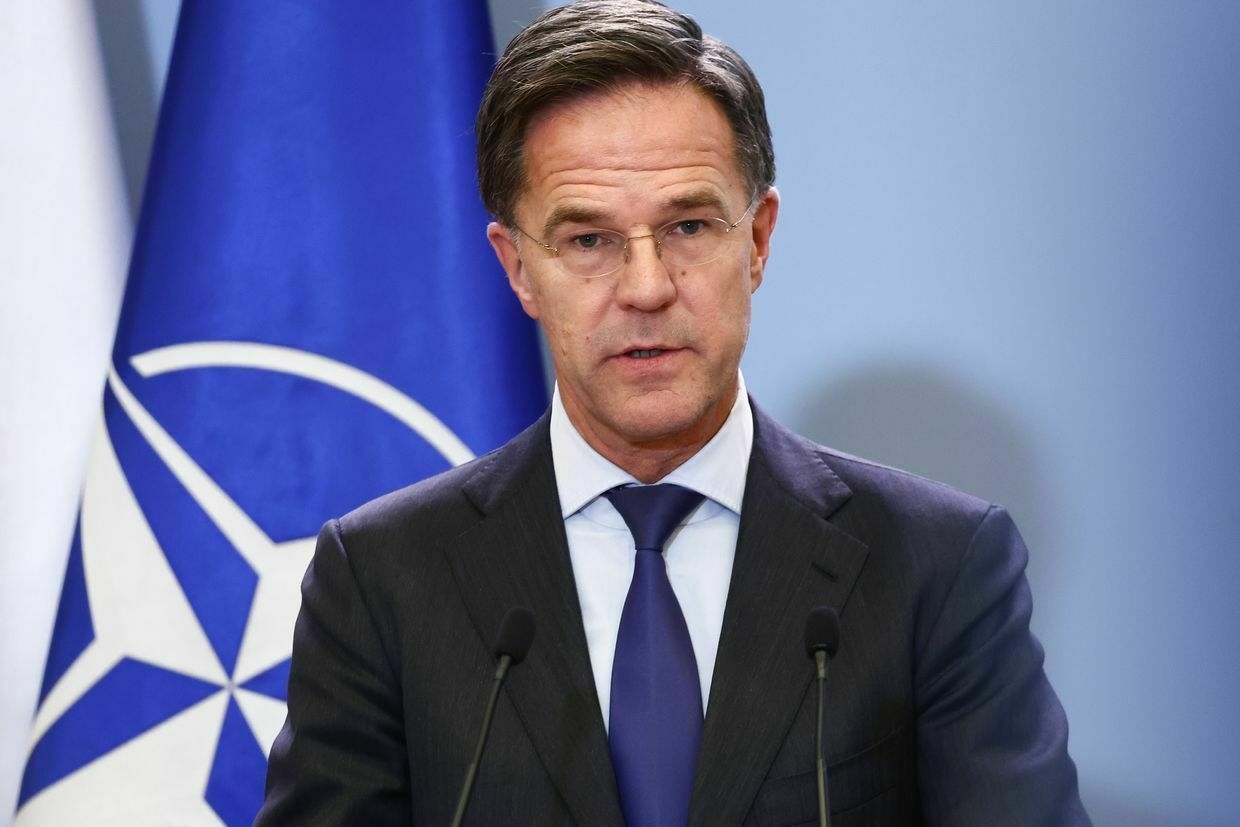
NATO Secretary General Mark Rutte called on alliance members to deliver a “quantum leap” in defense investment as the threat from Russia persists, Bloomberg reported on June 9.
“Danger will not disappear even when the war in Ukraine ends,” Rutte said in prepared remarks for a speech at Chatham House in London. “We must have more forces and capabilities to implement our defense plans in full."
Rutte urged NATO members to boost air and missile defense by 400%, citing lessons from Russia’s attacks on Ukraine.
Russia has been repeatedly targeting Ukrainian cities with missiles and drones of different types. Most recently, on June 9, Russia launched 499 drones and missiles during its massive overnight attack across Ukraine.
Kyiv has been consistently calling on its allies to boost air defense support.
“We see in Ukraine how Russia delivers terror from above, so we will strengthen the shield that protects our skies,” Rutte said, according to Bloomberg.
Rutte is pushing for NATO countries to adopt a new military spending target of 3.5% of gross domestic product (GDP) by 2032, alongside an additional 1.5% of GDP for security-related projects such as cyber defense and border control. The proposal comes after U.S. President Donald Trump called on allies to spend 5% of GDP on defense.
Rutte’s remarks follow his earlier warning during an April visit to the White House, where he met with Trump. There, he reiterated that NATO views Russia as a “long-term threat” to Euro-Atlantic security.
“We all agree, in NATO, that Russia is the long-term threat to NATO territory, to the whole of the Euro-Atlantic territory,” Rutte said after those talks.
Amid missile shortage, Ukraine’s air defenses are struggling under Russian ballistic attacksAs the air defense missile stocks run low and the future of U.S. military aid to Ukraine grows increasingly uncertain, Kyiv is under pressure to defend its sky. The concerns mount as Russia scales up its aerial attacks across Ukraine, combining ballistic missiles and drones to overwhelm air defenses.The Kyiv IndependentAsami Terajima
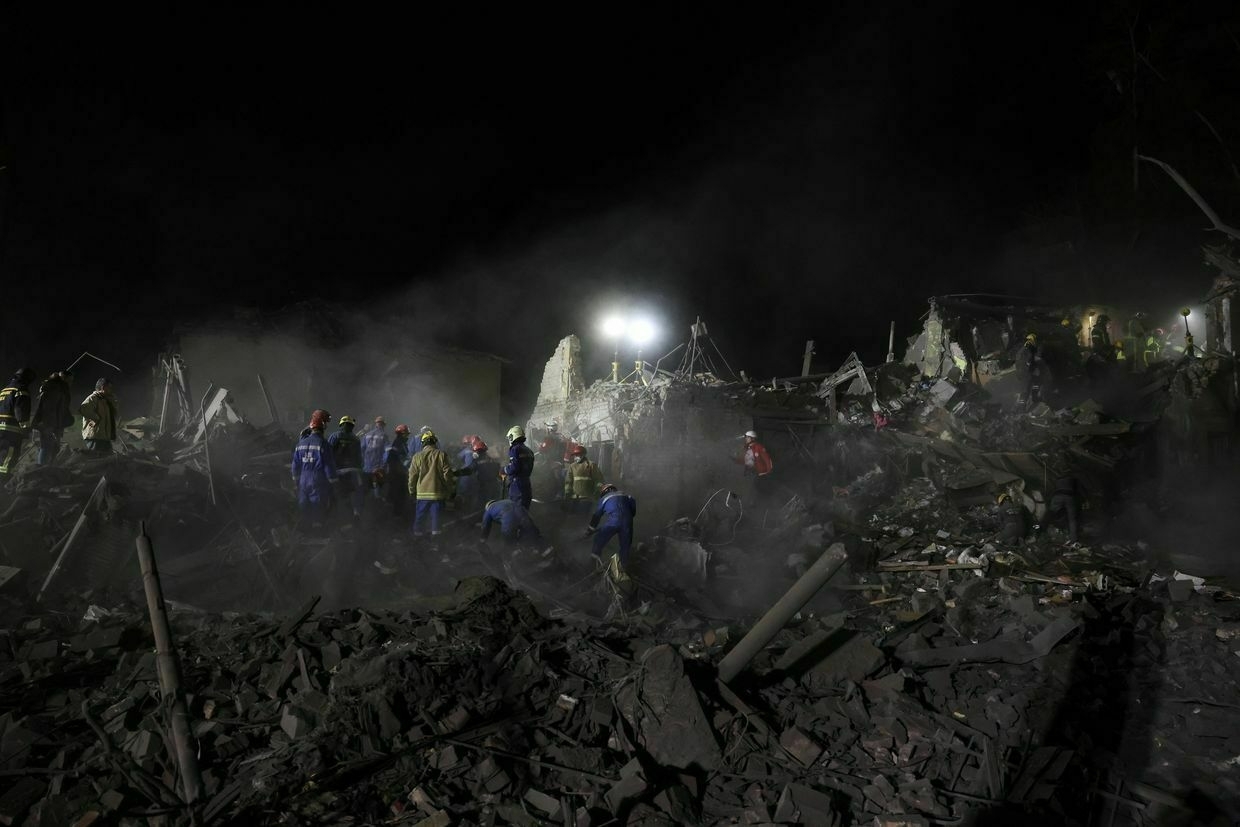
-
Ukraine shoots down nearly 500 drones, missiles in Russian record strike, Air Force says
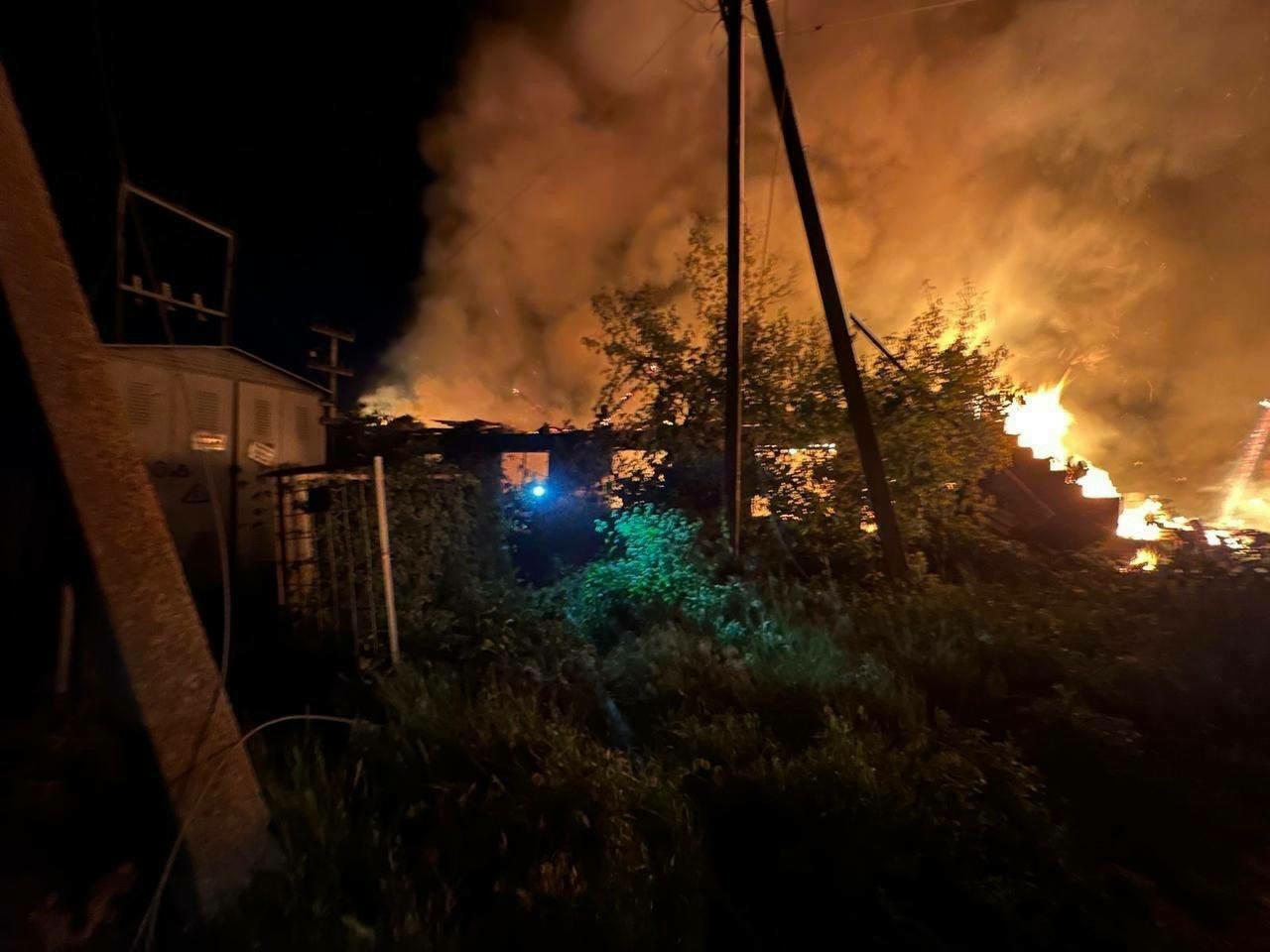
Ukraine’s Air Force said on June 9 that it intercepted a total of 479 Russian drones and missiles during a record-high wave of strikes overnight.
According to the official statement, Russia launched 499 weapons, including 479 Shahed‑type attack drones and various decoy drones, four Kh‑47M2 “Kinzhal” air-launched ballistic missiles, 10 Kh‑101 cruise missiles, three Kh‑22 cruise missiles over the Black Sea, two Kh‑31P anti‑radar missiles, and one Kh‑35 cruise missile from occupied Crimea.
Ukraine had reportedly neutralized 479 of the incoming targets, with 292 were shot down, and 187 jammed or lost via electronic warfare.
In Kyiv Oblast, air‑raid sirens lasted over ten hours, according to Governor Mykola Kalashnyk. Air defences shot down Russian drones. No civilian casualties were reported. Two houses, a car, and an outbuilding in Boryspil district were reportedly damaged.
In Rivne Oblast, Governor Oleksandr Koval described the night as very heavy. One civilian was reportedly injured. The attack, according to Koval, was the largest since the beginning of Russia’s full-scale war.
In Zaporizhzhia Oblast, one person was injured, according to Governor Ivan Fedorov. Over the day, 498 strikes reportedly struck 14 populated areas.
In Kherson Oblast, numerous towns were hit by drones, artillery, and airstrikes. Three apartment blocks, 13 houses, a farm, and vehicles were damaged. Four civilians were injured, the governor said.
In Kharkiv Oblast, nine villages were hit. Seven civilians suffered minor injuries, according to Governor Oleh Syniehubov. Russian forces reportedly used 22 unguided aviation rockets, 18 guided bombs (KAB), 6 Geran (Shahed) drones, 4 unspecified UAVs, and 1 Molniya drone. Civil damage included houses, a store, a camp, and vehicles.
In Dnipropetrovsk Oblast, Ukrainian defences downed six UAVs at night, Governor Serhii Lysak said. A farm, houses, and vehicles in the region were reportedly hit.
In Sumy Oblast, Russian forces launched nearly 90 strikes across 35 settlements, injuring nine civilians, local authorities reported. Shops, a school, homes, and cars were reportedly damaged. Authorities evacuated 21 people.
In Cherkasy Oblast, air defences shot down 33 Russian drones overnight. No injuries were reported, but falling debris damaged four houses, a farm outbuilding, and a car in the Cherkasy district.
Ukrainian drones hit Russian electronic warfare facility in Chuvashia Republic, military saysThe General Staff of Ukraine’s Armed Forces confirmed the strike, saying Ukrainian drone units, in coordination with other units, targeted VNIIR-Progress and ABS Electro in Cheboksary overnight as part of efforts to degrade Russia’s capacity to produce air attack systems.The Kyiv IndependentAbbey Fenbert
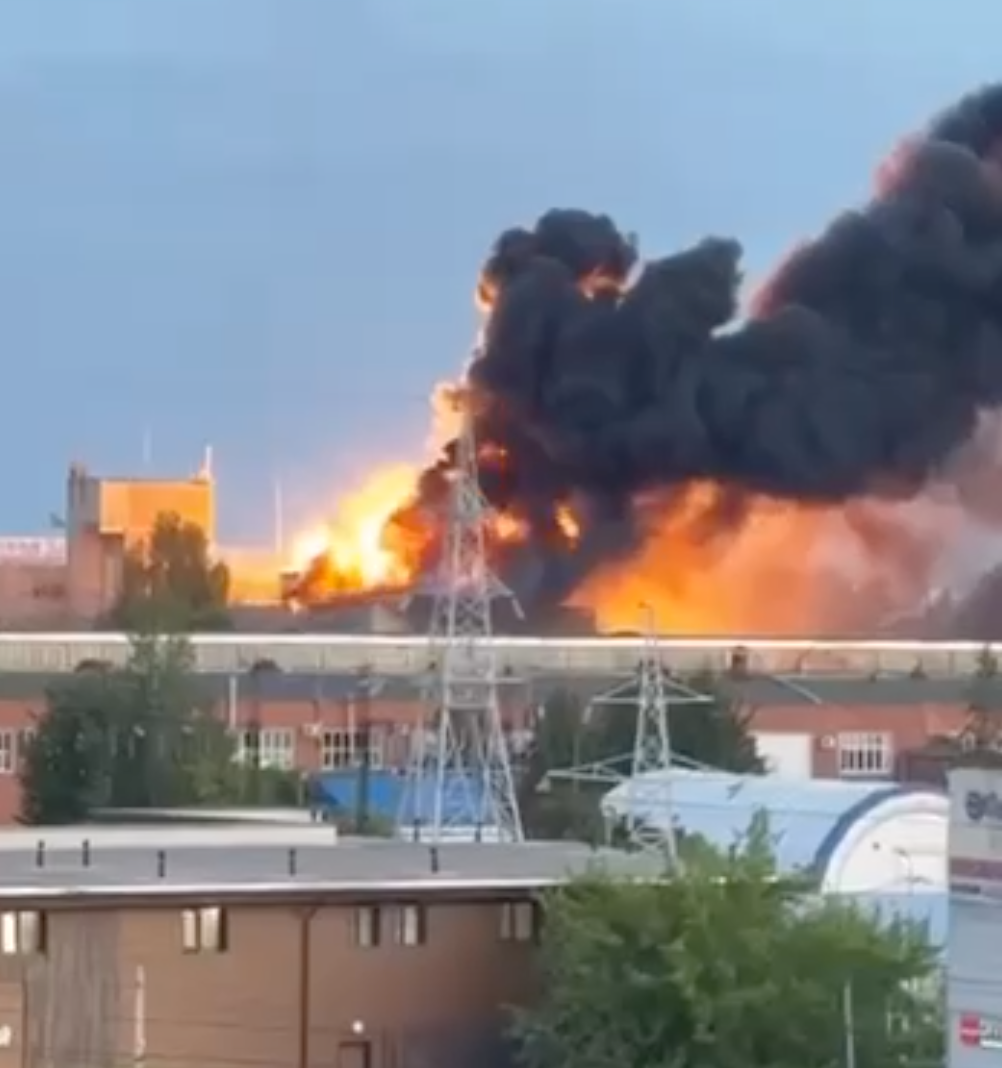
-
Ukraine says it hit Russian MiG-31, Su-30/34 fighter jets following attack on airfield
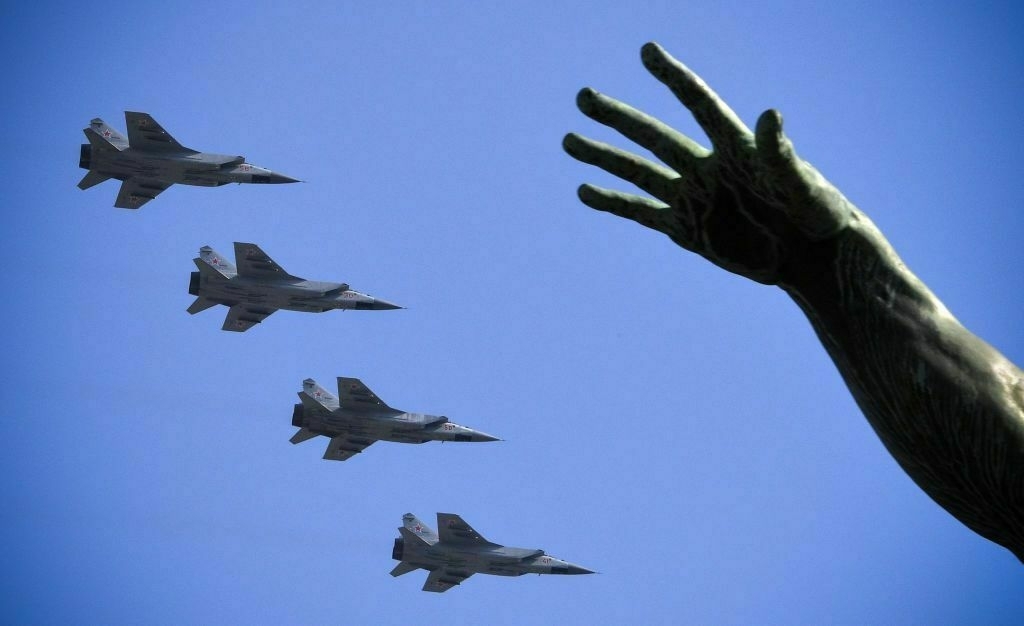
A Ukrainian strike allegedly damaged two Russian military aircraft — a MiG-31 and either a Su-30 or Su-34 fighter jet — at an airfield used to launch Kinzhal missile attacks, the General Staff of Ukraine’s Armed Forces said on May 9.
The extent of the damage is still being assessed, the military said.
Ukraine’s overnight strike targeted the Savasleyka airfield in Russia's Nizhny Novgorod Oblast, which the Kremlin uses to launch MiG-31K jets armed with Kinzhal hypersonic missiles, according to the General Staff.
The operation was conducted by Ukrainian Special Operations Forces in coordination with other units.
The strike happened as Russia launched a massive attack on Ukrainian cities overnight on June 9.
Recently, Ukraine has stepped up strikes on Russian military aircraft, which Moscow often uses to target civilian infrastructure. Earlier this month, Ukrainian drones destroyed dozens of Russian strategic bombers and surveillance aircraft in a series of attacks dubbed Operation Spiderweb.
On June 1, the Security Service of Ukraine (SBU) used smuggled first-person-view drones to strike four Russian airfields: Olenya, Ivanovo, Dyagilevo, and Belaya. The SBU said 41 aircraft were damaged or destroyed, including heavy bombers and rare A-50 spy planes, causing an estimated $7 billion in damage.
Footage of those strikes, released by Ukrainian officials on June 4, showed direct hits on key Russian aircraft. Ukrainian officials say such operations aim to limit Russia’s ability to launch missile attacks against Ukrainian cities.
Operation Spiderweb — everything we know about Ukraine’s ‘audacious’ attack on Russia’s heavy bombersUkraine was jubilant on June 1 as news filtered through of a stunning drone attack targeting Russian heavy bombers, that simultaneously targeted four air bases, two of them thousands of miles inside Russia. “Enemy strategic bombers are burning en masse in Russia — this is the result of a special operationThe Kyiv IndependentChris York
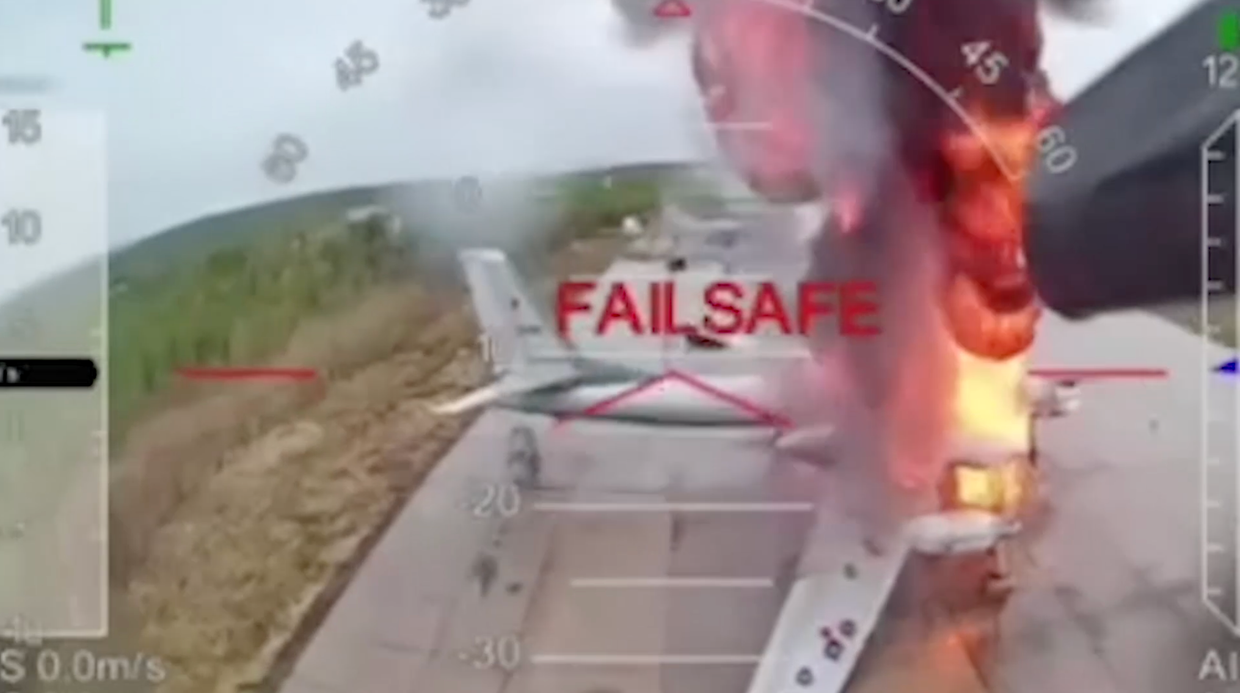
-
Putin approves new naval strategy as Russia seeks to restore maritime power
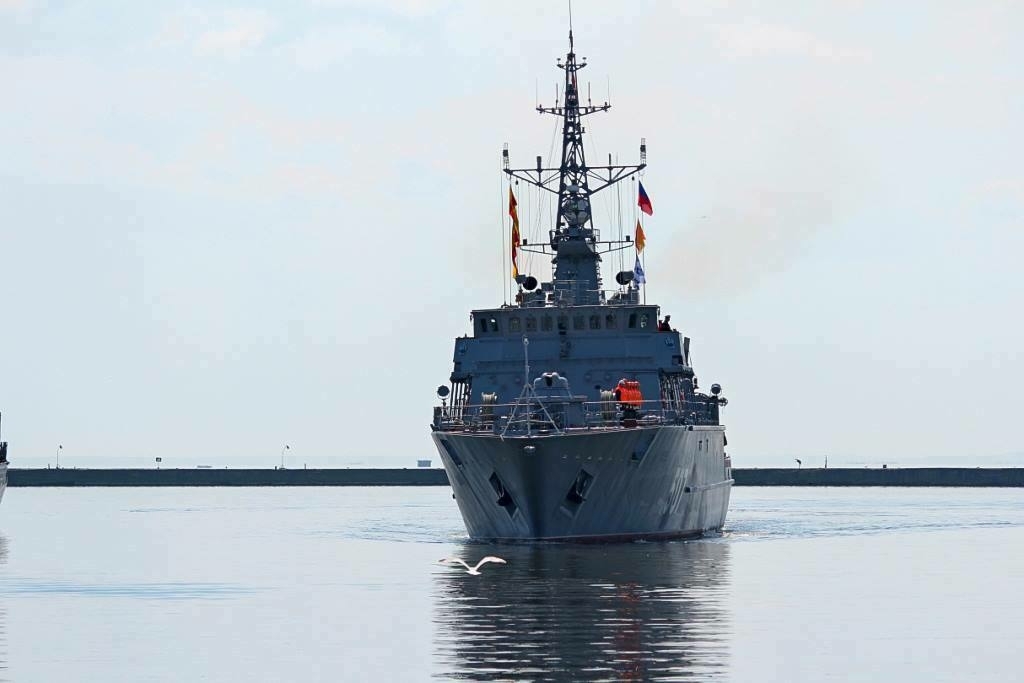
Russian President Vladimir Putin has approved a new naval strategy aimed at fully restoring Russia’s position as a leading global maritime power, Kremlin aide Nikolai Patrushev said in an interview with the Russian state-controlled Argumenty i Fakty newspaper.
Patrushev, a former KGB officer, told the Russian newspaper that the new document, titled The Strategy for the Development of the Russian Navy up to 2050, was approved in late May.
“Russia’s position as one of the world’s greatest maritime powers is gradually recovering,” Patrushev said. He added that such work requires a long-term vision of future maritime challenges and threats.
Patrushev provided no further details on the new naval strategy
Russia currently operates the world’s third most powerful navy, according to most public rankings, behind China and the United States. However, the fleet has suffered a string of losses during the war against Ukraine, particularly in the Black Sea.
Since September 2022, Ukraine has used naval kamikaze drones to target the Russian Black Sea Fleet, destroying several vessels. The latest strike sank a Mangust-class patrol boat off the coast of occupied Crimea using a domestically produced Magura drone.
Ukraine’s campaign has drawn on the Jeune École naval doctrine, leveraging small, low-cost drones against larger warships. After losing its conventional surface fleet early in the war, Ukraine turned to developing its own naval drones.
The approach has proven effective.
In April 2022, Ukraine sank the Moskva, the fleet’s flagship, with Neptune missiles. It has since struck key naval bases and reportedly disabled or destroyed around a third of Russia’s Black Sea Fleet. The General Staff said in June that 29 Russian vessels had been taken out of action.
In response, Russia began pulling back ships from occupied Crimea to the port of Novorossiysk in late 2024 to shield them from further attacks. The redeployment limited Moscow’s ability to blockade Ukrainian grain exports, though Russian naval capabilities in other regions remain largely intact.
As Ukraine, Russia agree to ceasefire at sea, Moscow’s battered Black Sea Fleet is set to get a reprieveThe White House on March 25 announced that Ukraine and Russia had agreed to “eliminate the use of force” in the Black Sea, returning the spotlight to a theater of battle that has been relatively quiet for more than a year. Throughout 2022 and 2023, Ukrainian strikes against Russian ships,The Kyiv IndependentMartin Fornusek

-
General Staff: Russia has lost 997,120 troops in Ukraine since Feb. 24, 2022
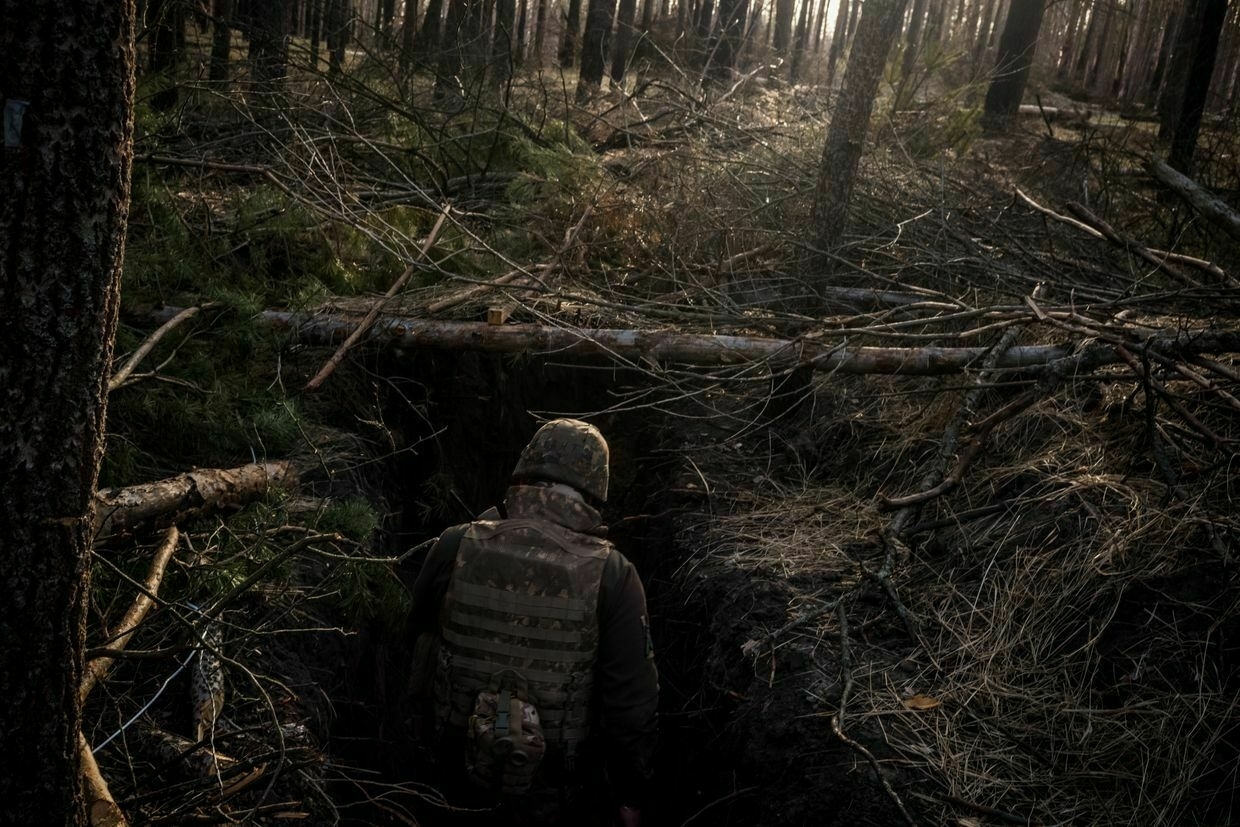
Russia has lost 997,120 troops in Ukraine since the beginning of its full-scale invasion on Feb. 24, 2022, the General Staff of Ukraine’s Armed Forces reported on June 9.
The number includes 970 casualties that Russian forces suffered just over the past day.
According to the report, Russia has also lost 10,915 tanks, 22,759 armored fighting vehicles, 51,348 vehicles and fuel tanks, 28,934 artillery systems, 1,411 multiple launch rocket systems, 1,183 air defense systems, 414 airplanes, 337 helicopters, 39,818 drones, 28 ships and boats, and one submarine.
Trump administration redirects 20,000 anti-drone missiles meant for Ukraine, Zelensky confirms“We counted on this project — 20,000 missiles. Anti-Shahed missiles. It was not expensive, but it’s a special technology,” President Volodymyr Zelensky said.The Kyiv IndependentTim Zadorozhnyy

-
Ukrainian boxer Usyk invites Trump to his home to see Russia's war firsthand, BBC reports

Unified heavyweight champion Oleksandr Usyk invited U.S. President Donald Trump to live for a week in his house in Ukraine during a June 8 interview with BBC Sport.
Trump has pledged to negotiate an end to Russia’s war against Ukraine, but after six months in office a ceasefire remains nowhere in sight. Trump has threatened to abandon the peace process altogether and even suggested Ukraine is to blame for Russia’s intensifying aerial attacks.
Usyk said he would welcome Trump to visit his home in Ukraine to experience the realities of the war firsthand.
“I advise American President Donald Trump, go to Ukraine and live in my house one week. Only one week … Watch what’s going on every night,” he told BBC Sport.
“Every night, bombs fly above my house. Bomb, rocket, Shahed. Every night."
Usyk’s appeal to Trump comes after multiple large-scale Russian attacks against Ukrainian cities.
Originally from Crimea, Usyk now resides in Kyiv, the target of several drone and missile strikes in late May and early June. Russia has broken its nightly drone record repeatedly in the last two weeks and U.S. officials have warned Ukraine to expect more mass strikes in the coming days.
While Trump initially criticized Russian President Vladimir Putin after a series of consecutive attacks against Ukrainian cities in late May, he did not follow through on threats to sanction Moscow.
Trump has since attempted to delay and soften a U.S. Senate bill imposing harsher sanctions against Russia and has even threatened to possibly sanction Ukraine.
Usyk has previously directed public comments to Trump while advocating for Ukraine. During the 2024 U.S. presidential election, Usyk took to social media to urge Trump to use his purported influence over Putin to help free Ukrainian prisoners of war (POWs).
Usyk has held the title of unified heavyweight champion since 2021. Before his professional boxing career, he was a gold medalist at the 2012 Olympic Games in London.
US expects Russia’s retaliation for Operation Spiderweb to continue soonOne official told Reuters that while the timing remains unclear, a retaliatory strike could be expected in the coming days and is likely to be “asymmetrical.”The Kyiv IndependentTim Zadorozhnyy
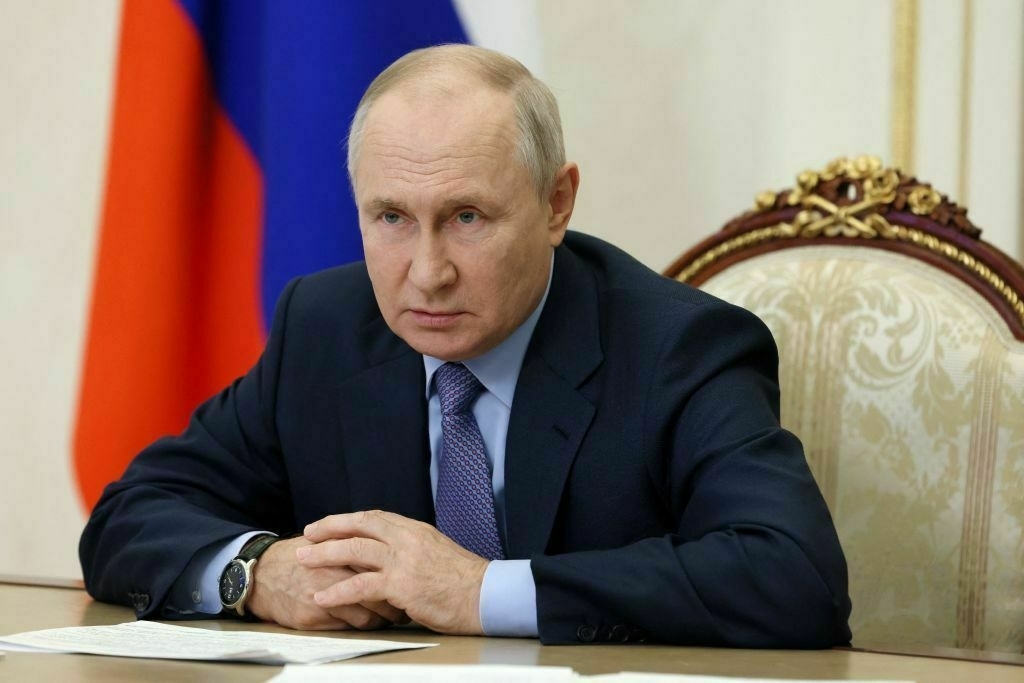
-
Drone attack ignites blaze in Russia's Chuvashia Republic, media reports
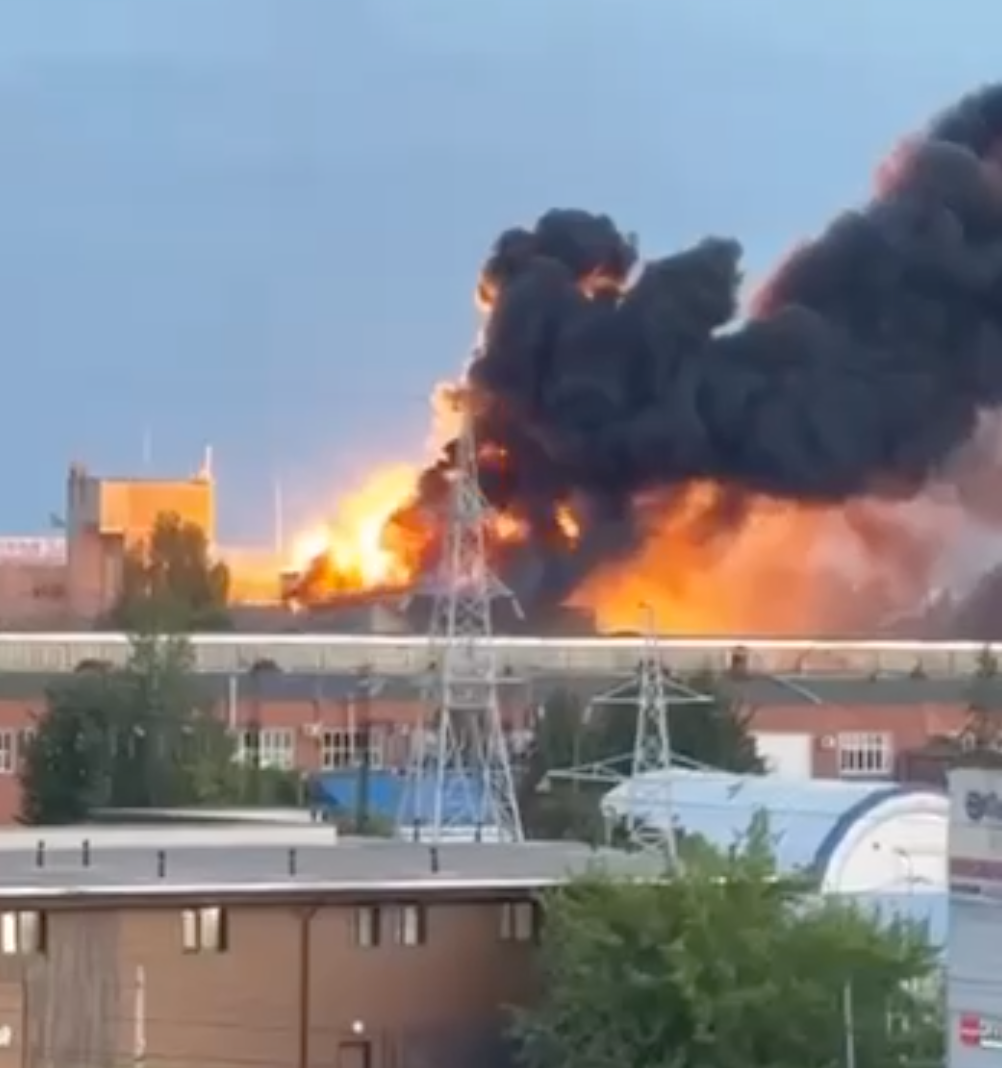
Editor’s Note: This is a developing story and is being updated.
Explosions and massive fires followed a drone attack on the Russian city of Cheboksary in the Chuvashia Republic, Russian Telegram news channels reported in the early hours of June 9.
Ukrainian drones allegedly targeted an oil depot in Cheboksary in a previous attack in March.
In video footage from local residents purporting to show the June 9 strike, smoke and flames can be seen rising over the city of Cheboksary. One video, published by the Russian independent news outlet Astra, shows a drone approaching the target and making impact, causing another explosion.
0:00/Footage purporting to show an alleged Ukrainian drone strike against the Russian city of Cheboksary in the Chuvashia Republic on June 9, 2025. (Astra) Russian officials have not yet commented on the alleged attack and the Kyiv Independent could not verify the claims.
Overnight drone strikes in Russia reportedly triggered flight restrictions at airports in Kazan, Nizhny Novgorod, Saratov, and Tambov.
Ukraine reportedly attacked the Burevestnik oil refinery in Cheboksary on March 9, in its first reported drone attack against the Chuvashia Republic. The refinery lies over 900 kilometers (559 miles) from the Ukrainian border.
Since 2022, Kyiv has launched repeated attacks against Russian refineries, which Ukraine considers to be valid military targets.
In recent days, Ukraine has launched a number of strikes against military facilities in Russia, including missile bases and airfields. The most audacious and high-profile attack came on June 1, when Ukraine carried out Operation Spiderweb — a mass drone strike that simultaneously targeted four major Russian air bases, reportedly damaging 41 planes.
Ukraine war latest: US expects Russia’s retaliation for Operation Spiderweb to continue soon; Ukraine denies Russian troop presence in Dnipropetrovsk Oblast, describes situation as ‘tense’Key developments on June 7-8: * US expects Russia’s retaliation for Operation Spiderweb to continue soon * Ukraine denies Russian troop presence in Dnipropetrovsk Oblast amid offensive, describes situation as ‘tense’ * Trump administration redirects 20,000 anti-drone missiles meant for Ukraine, Zelensky confirms * Ukraine downs fighter jet in Russia’s Kursk Oblast, AirThe Kyiv IndependentThe Kyiv Independent news desk
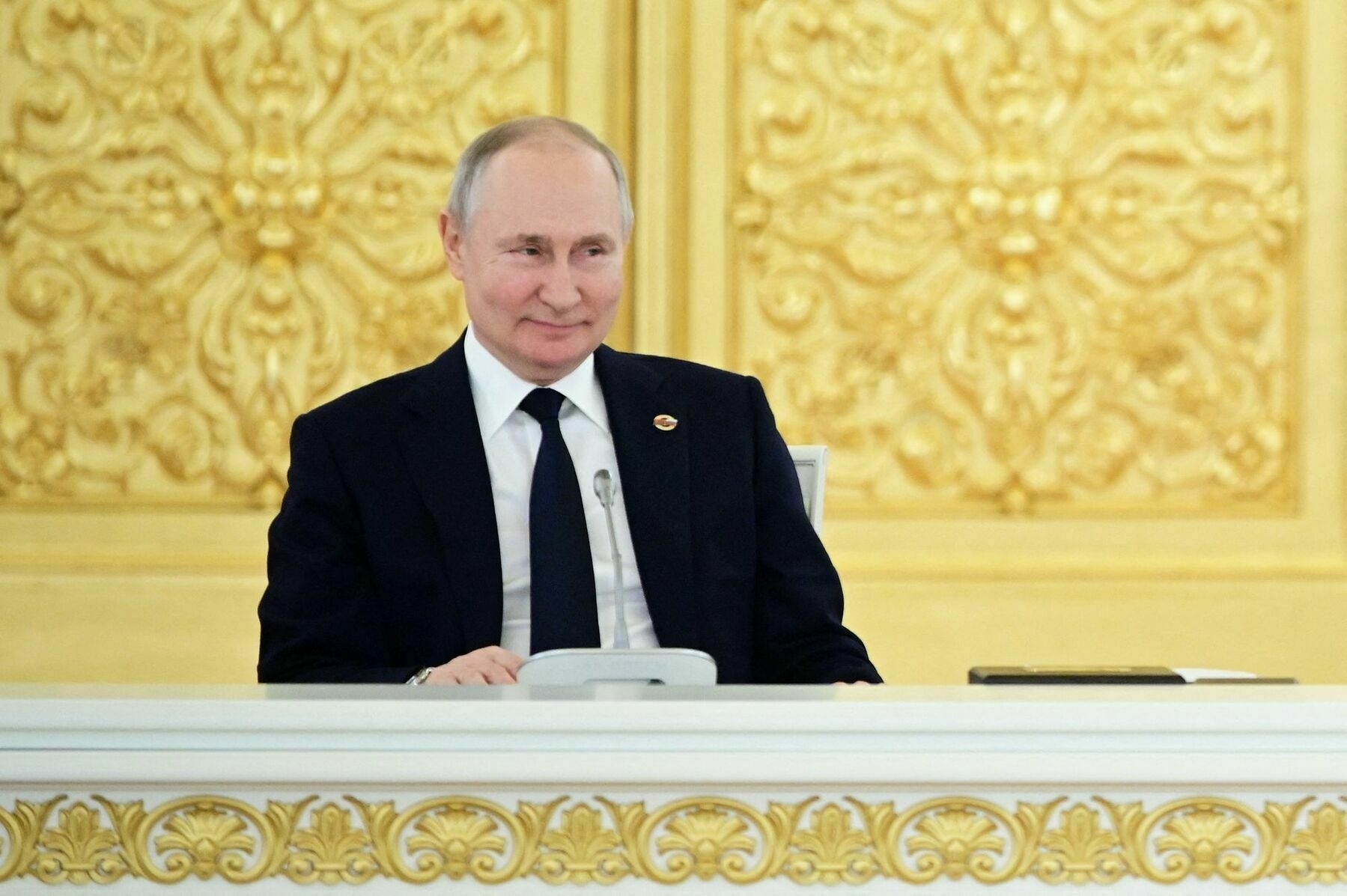
-
Russian missiles target western Ukraine in latest mass attack
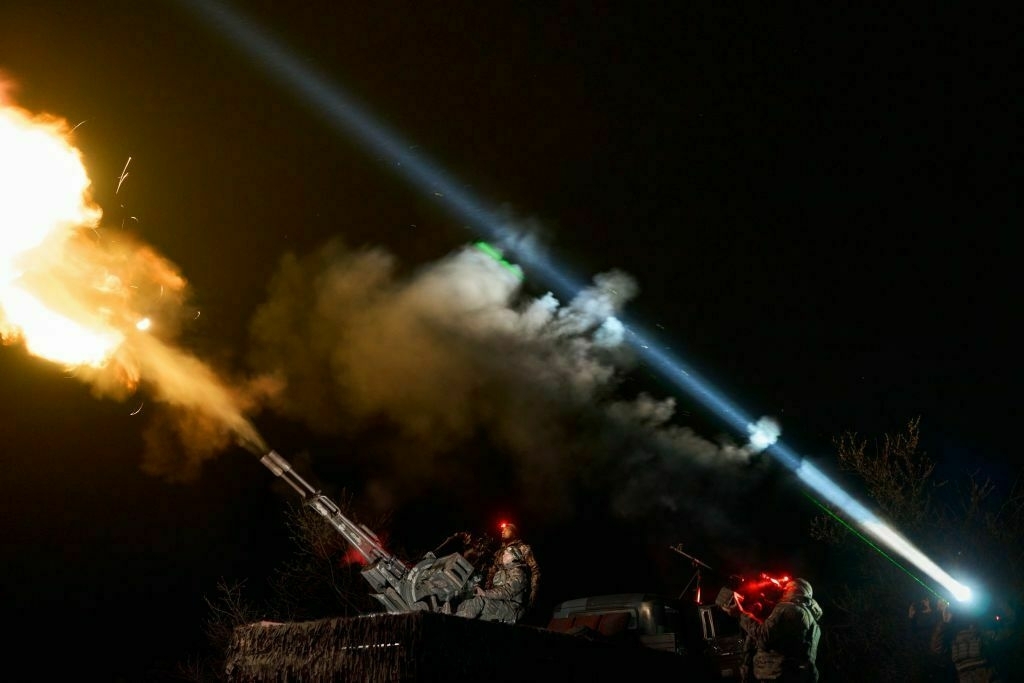
Editor’s Note: This is a developing story and is being updated.
Russia launched another large-scale attack against Ukraine overnight on June 9, assailing cities across the country with drones and missiles.
Multiple rounds of explosions have been reported in Rivne, a city far from the front lines in northwestern Ukraine, amid an ongoing drone and missile attack.
The mass strike comes shortly after Russia on June 6 launched 452 drones and 45 missiles at Ukraine in a single night — one of the largest aerial attacks in the full-scale war. The Kremlin claimed the bombardment was retaliation for Kyiv’s Operation Spiderweb drone strike on Russian strategic aircraft.
Ukraine’s Air Force issued aerial alerts throughout the night on June 8-9, warning multiple regions of the threat of ballistic missiles and Shahed-type attack drones.
Explosions have been reported in Kyiv and Rivne.
Tymur Tkachenko, head of the Kyiv City Military Administration, said that an office building in the capital’s Darnytsia district had been damaged in the attack.
Trump administration redirects 20,000 anti-drone missiles meant for Ukraine, Zelensky confirms“We counted on this project — 20,000 missiles. Anti-Shahed missiles. It was not expensive, but it’s a special technology,” President Volodymyr Zelensky said.The Kyiv IndependentTim Zadorozhnyy
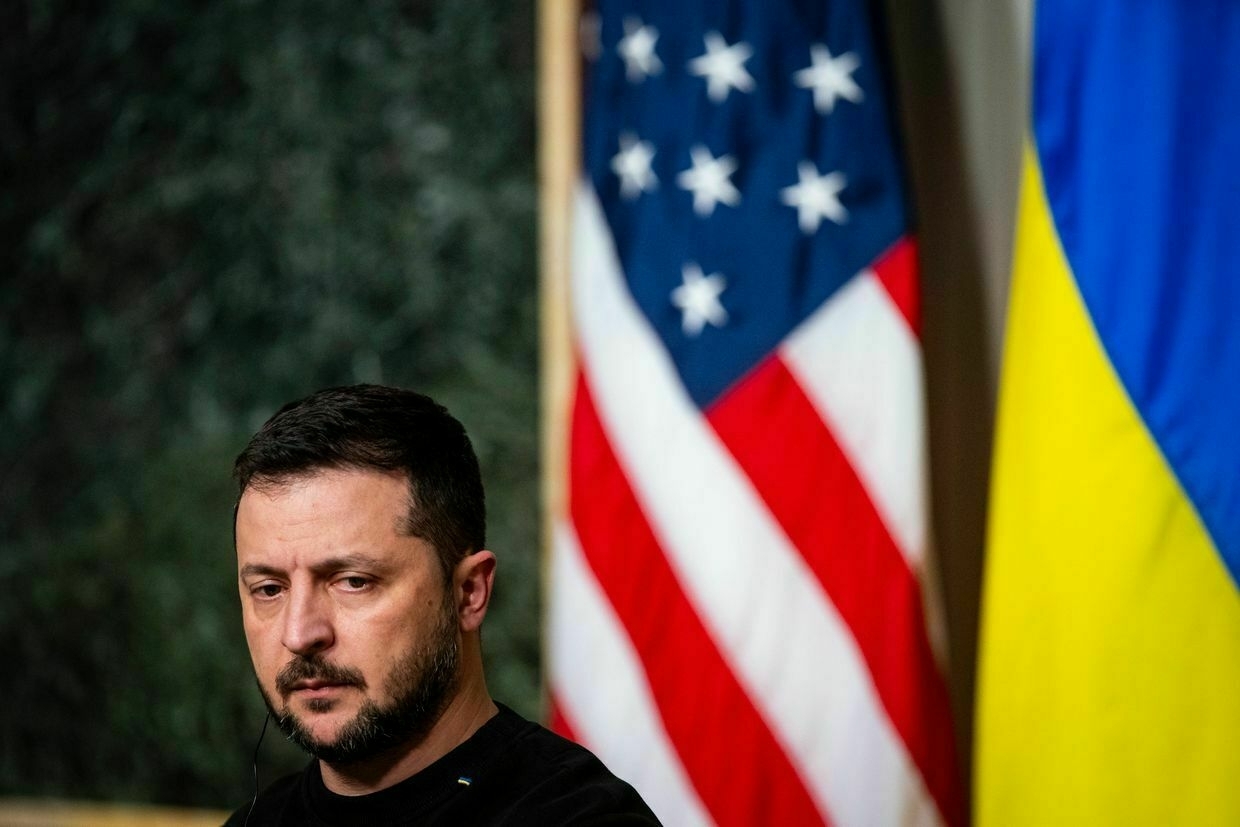
Reuters reported on June 8 that the U.S. expects Russia to launch more large-scale, multi-pronged strikes at Ukraine in the coming days as part of Moscow’s “asymmetrical” response to Operation Spiderweb.
The Kremlin’s retaliation could target high-value government sites, such as administrative buildings or intelligence facilities, a Western diplomatic source said.
The Security Service of Ukraine (SBU) on June 1 carried out an audacious mass drone attack on four key Russian air bases, reportedly damaging 41 military planes, including the heavy bombers Moscow uses to carry out attacks on Ukrainian cities.
The operation took 18 months to plan and execute, and allegedly caused $7 billion of damage to Russia’s aerial fleet.
Russian President Vladimir Putin reportedly warned U.S. President Donald Trump during a June 5 phone call that Moscow was preparing a response to the operation. That night, Russia’s mass strikes injured 80 people and killed four civilians, including emergency workers.
Trump said the next day that Operation Spiderweb “gave Putin a reason to go in and bomb the hell out of them last night."
Ukraine’s Operation Spiderweb exclusively targeted military facilities — specifically, the aircraft used to bomb civilian targets in Ukraine. The strike followed three years of aerial attacks and three months of Russian refusal to accept a ceasefire.
In the days leading up to the June 1 operation, Russia launched three heavy aerial attacks against Ukraine over three consecutive nights.
President Volodymyr Zelensky has rejected the idea that Russia’s attacks are a response to Operation Spiderweb. Following a night and day of relentless bombings in the northeastern city of Kharkiv, Zelensky on June 7 said Russia’s strikes were “not ‘retaliation’ but acts of destruction."
Ukraine war latest: US expects Russia’s retaliation for Operation Spiderweb to continue soon; Ukraine denies Russian troop presence in Dnipropetrovsk Oblast, describes situation as ‘tense’Key developments on June 7-8: * US expects Russia’s retaliation for Operation Spiderweb to continue soon * Ukraine denies Russian troop presence in Dnipropetrovsk Oblast amid offensive, describes situation as ‘tense’ * Trump administration redirects 20,000 anti-drone missiles meant for Ukraine, Zelensky confirms * Ukraine downs fighter jet in Russia’s Kursk Oblast, AirThe Kyiv IndependentThe Kyiv Independent news desk
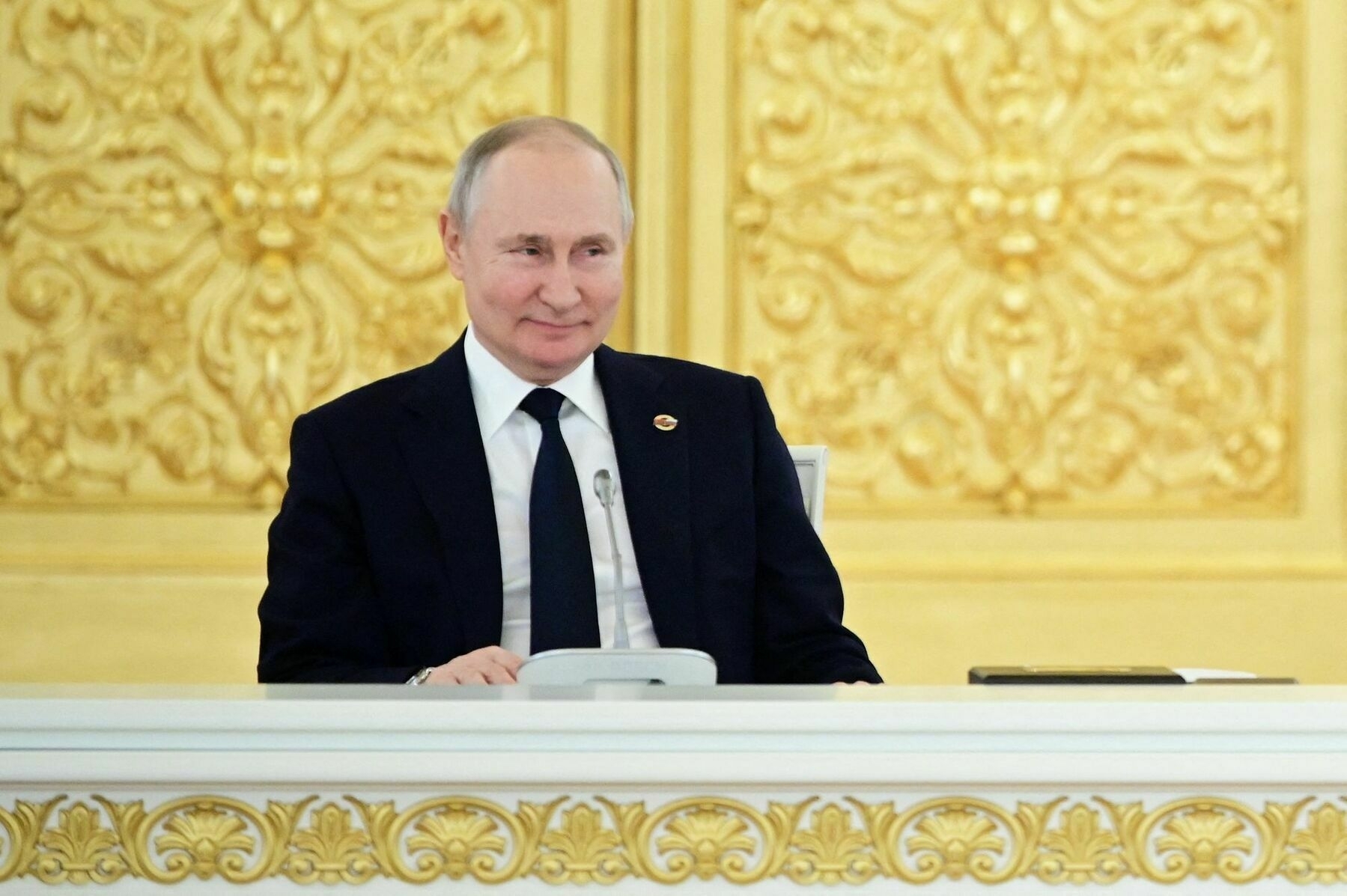
-
Ukrainian opera tenor and volunteer killed in Sumy Oblast
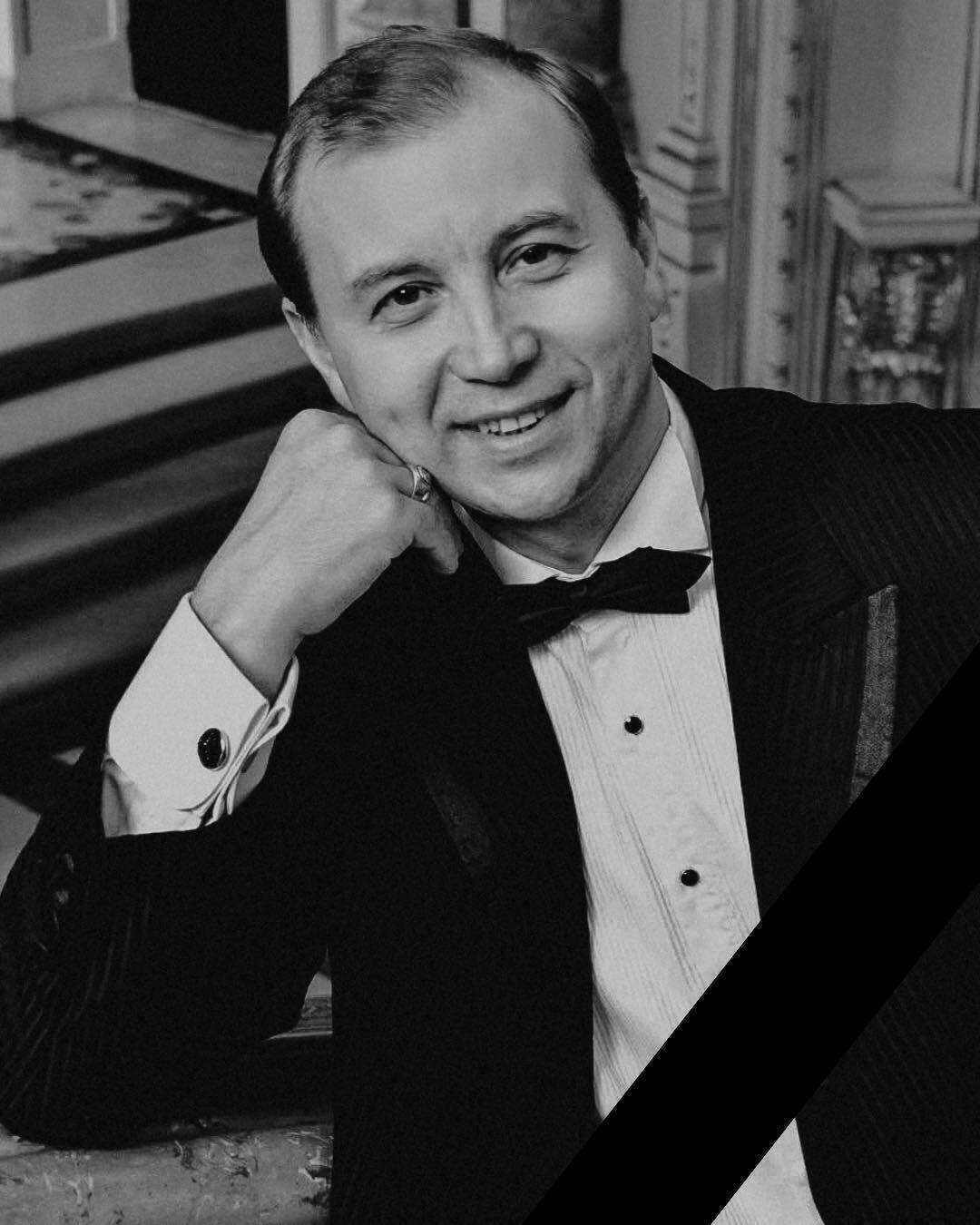
Vladyslav Horai, a renowned tenor and soloist of the Odesa National Opera, was killed in Ukraine’s northeastern Sumy Oblast while on a volunteer mission, the opera house reported on June 8.
“A tragic loss has shaken the entire Ukrainian arts community,” the Odesa National Opera wrote in a Facebook post. “Today, June 8, while carrying out his volunteer mission in the Sumy region, the soloist of the Odesa National Opera, a world-class tenor, volunteer, father, a man of great heart, and Honored Artist of Ukraine — Vladyslav Horai — was killed."
Horai was widely known both in Ukraine and internationally for his voice and stage presence, according to his colleagues. “Vladyslav was not just a talent of the stage — he was an example of strength, dignity, and kindness in life,” the opera house said.
Horai had been a member of the opera troupe at the Odesa National Academic Theater of Opera and Ballet since 1993. He was a laureate of the National Chamber Music Competition in Khmelnytskyi and the International Antonín Dvořák Vocal Competition in Karlovy Vary, Czechia, and was awarded the title of Honored Artist of Ukraine in 2013.
“Even in the darkest of times, he never stood aside — he helped, volunteered, supported. The Odesa National Opera is in mourning. The stage on which he lived will sound different without him."
These Ukrainian artists, writers were killed by Russia’s war“My worst fear is coming true: I’m inside a new Executed Renaissance. As in the 1930s, Ukrainian artists are killed, their manuscripts disappear, and their memory is erased,” Ukrainian writer Viktoriia Amelina penned in the foreword to the published diary of another author, Volodymyr Vakulenko, murdered during the Russian occupationThe Kyiv IndependentDinara Khalilova

-
Renault to begin drone production in Ukraine, media reports

French automaker Renault will begin manufacturing drones in Ukraine, France Info reported, marking a significant collaboration between the automotive and defense sectors. Renault will partner with a small French defense company to equip production lines on Ukrainian territory, with the drones expected to serve both Ukrainian and French military forces.
While the French Defense Ministry declined to comment on Renault specifically, Defense Minister Sébastien Lecornu confirmed on June 6 that a major French car manufacturer would join forces with a defense SME to launch drone production in Ukraine. Speaking to Le Monde, Lecornu did not name the automaker, but praised the project as an “unprecedented partnership.”
The production will take place away from front-line areas, although the exact locations were not disclosed. Lecornu emphasized that the assembly would be handled by Ukrainians, citing their strong expertise in drone development and combat deployment strategies.
Lecornu also said there is “no need” to send French citizens to work on the production line, since it will be set up in Ukraine, where Ukrainians “are better than us at designing drones and especially at developing the strategies that accompany them.”
This move underscores France’s growing support for Ukraine’s defense industry and comes as Ukraine continues to expand its own drone manufacturing capabilities.
Presidential advisor Oleksandr Kamyshin recently said that Ukrainian producers have the capacity to make over 5 million FPV drones annually.
Drone warfare has become a central component of the ongoing war, with both Ukraine and Russia increasingly relying on unmanned systems for reconnaissance and strikes. Recent long-range Ukrainian drone attacks, including hits on airfields deep inside Russian territory, have demonstrated the strategic value of such technology.
-
An attempt to break the spirit of Ukrainians: why Russia attacks with hundreds of shaheds #shorts
-
Ukraine BREAKS Russia's large-scale attack! Jake Broe on Operation “Spiderweb” #shorts
-
'No grounds for evacuation' from Sumy, Governor says amid Russian offensive into region
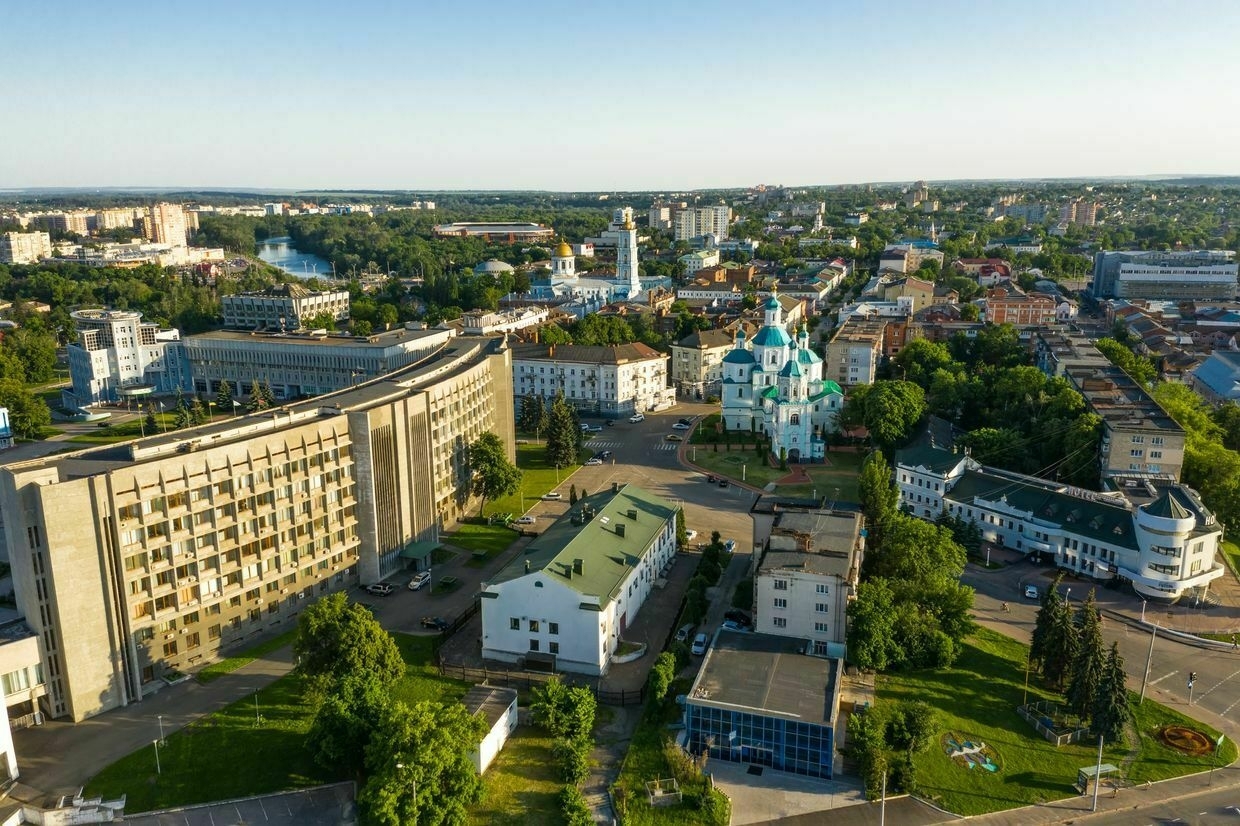
There are no plans for mass civilian evacuations from the city of Sumy, regional Governor Oleh Hryhorov said on June 8, as Russian advances into Sumy Oblast have continued to gain momentum.
“There are currently no grounds for evacuation from the city of Sumy. The situation along the Sumy Oblast border is tense but under control of the Defense Forces,” Hryhorov said on social media, referencing concerns on social media from residents.
Sumy Oblast has seen escalating attacks in recent weeks as Russia intensifies cross-border operations. Russian advances into Sumy have gained momentum since Ukrainian forces withdrew from most of their foothold in Russia’s Kursk Oblast in March.
Sumy Oblast, which borders Russia to the north, has been a repeated target of Russian incursions and shelling since the start of the full-scale invasion in 2022.
Sumy has repeatedly suffered from Russian strikes on the city. On June 3, Russian attacks on the city killed four people and injured 28 others, including three children.
On May 31, Hryhorov announced mandatory evacuation orders for 11 more villages due to intensifying attacks, bringing the total number of evacuated settlements in Sumy Oblast to 213.
The open-source battlefield monitoring group DeepState reported on June 8 that Russian forces have occupied the village of Loknia in Sumy Oblast, as the advances on small settlements along the border continues. Ukraine’s military has not yet commented on the reported advance, and the Kyiv Independent cannot independently verify the reporting.
In May, Russian President Vladimir Putin ordered his military to create a so-called “security buffer zone” along the border with Ukraine, while President Volodymyr Zelensky said on May 28 that Moscow had massed 50,000 troops near Sumy.
As 50,000 Russian troops amass, Ukraine’s Sumy Oblast braces for potential large-scale offensiveReports of an imminent Russian summer offensive and troop build ups on Ukraine’s border are raising alarms in Sumy Oblast and fears that a large-scale assault could be on the horizon. Russian President Vladimir Putin on May 22 said he had ordered his military to create a “security buffer zone”The Kyiv IndependentAsami Terajima
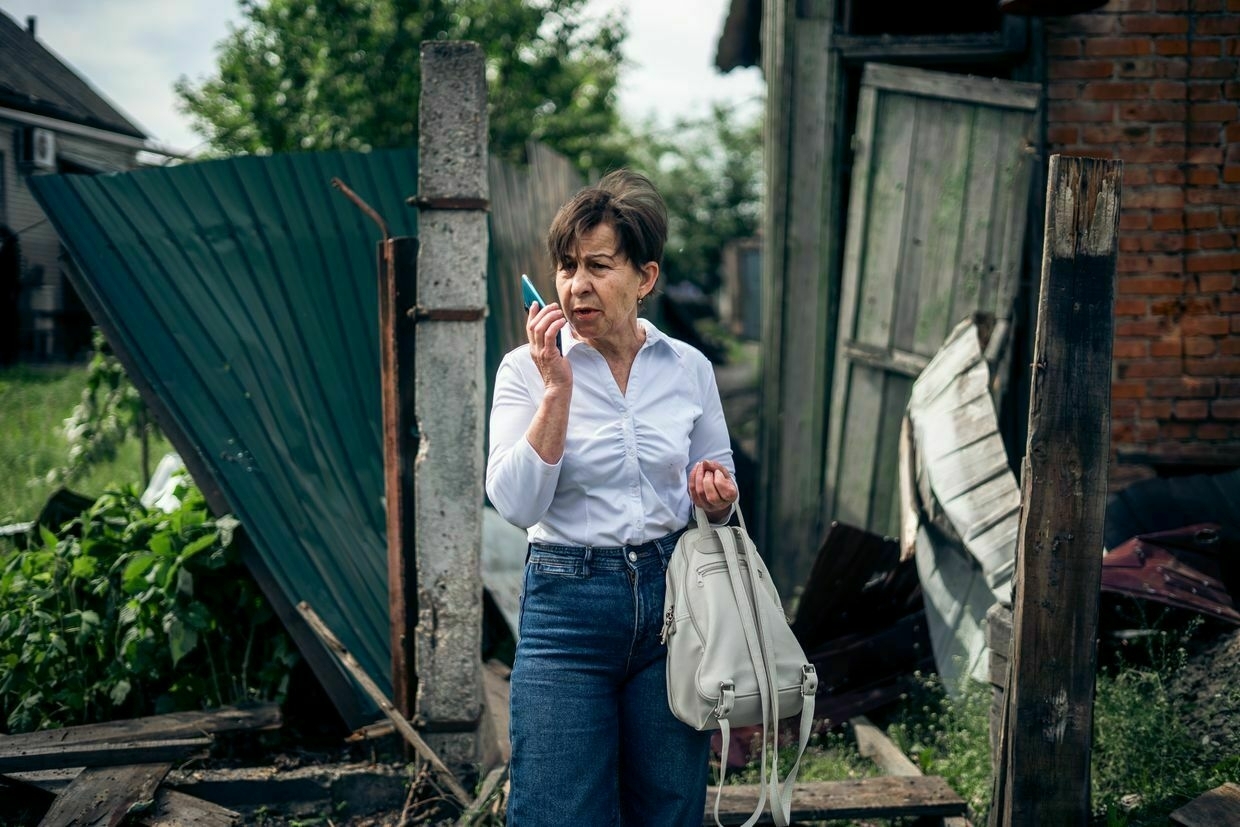
-
Ukraine war latest: US expects Russia's retaliation for Operation Spiderweb to continue soon; Ukraine denies Russian troop presence in Dnipropetrovsk Oblast, describes situation as 'tense'
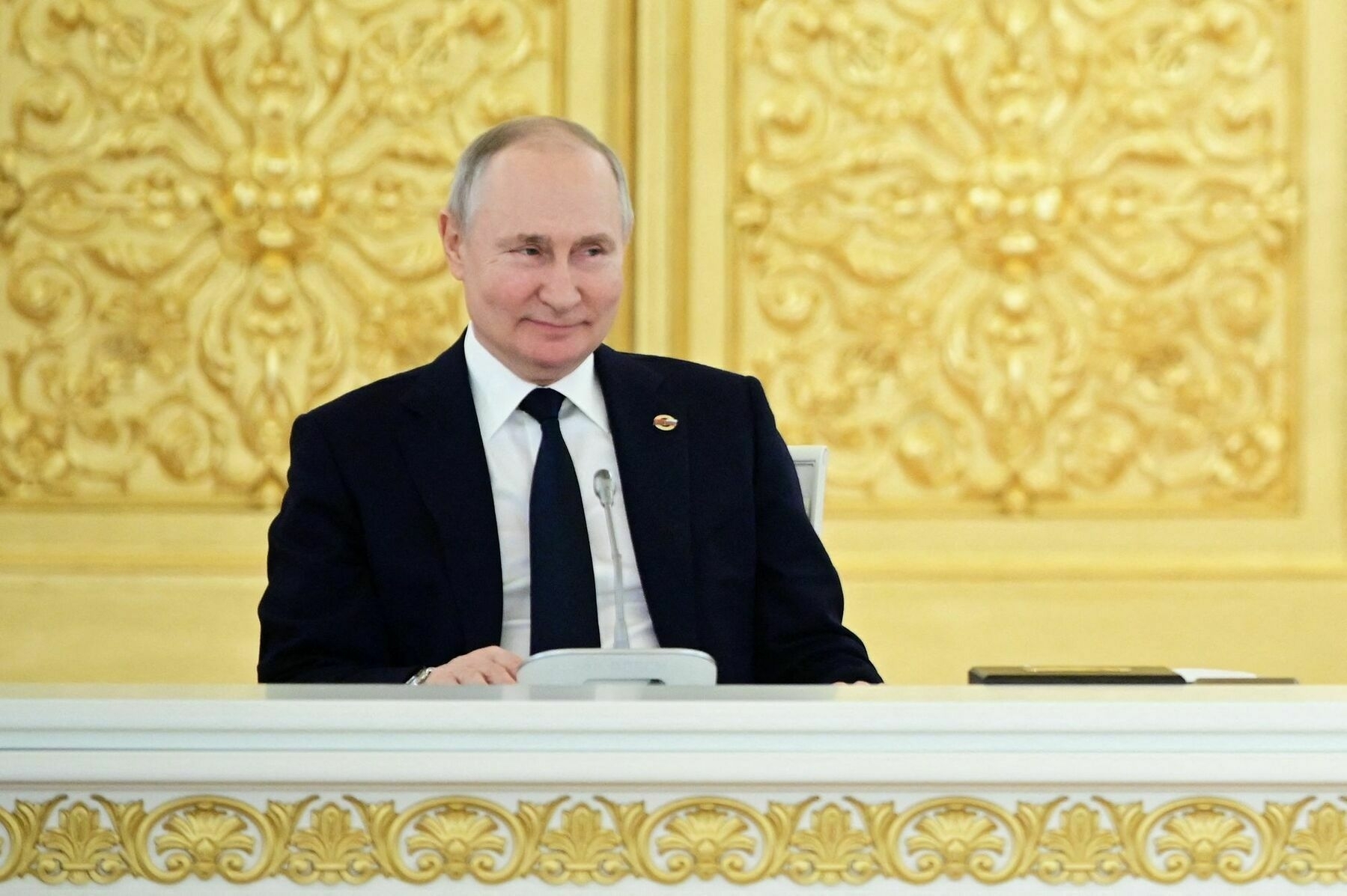
Key developments on June 7-8:
- US expects Russia’s retaliation for Operation Spiderweb to continue soon
- Ukraine denies Russian troop presence in Dnipropetrovsk Oblast amid offensive, describes situation as ‘tense’
- Trump administration redirects 20,000 anti-drone missiles meant for Ukraine, Zelensky confirms
- Ukraine downs fighter jet in Russia’s Kursk Oblast, Air Force says
- ‘I am against Ukraine’s entry into the European Union,’ Polish president-elect Nawrocki says
The U.S. believes Russia has not yet fully responded to Ukraine’s Operation Spiderweb and may soon launch another large-scale, multi-pronged strike following the massive June 6 attack, Reuters reported on June 8, citing unnamed U.S. officials.
One official told Reuters that, while the timing remains unclear, a retaliatory strike could be expected in the coming days and is likely to be “asymmetrical.” Another U.S. source said Russia would likely employ missiles and drones to hit a combination of targets.
The U.S. assessment follows the June 1 attack by Ukraine’s Security Service (SBU) on four Russian air bases using drones launched from trucks concealed within Russian territory.
Kyiv’s operation reportedly damaged 41 aircraft, including Tu-95 and Tu-22M3 bombers — two of Russia’s primary platforms for missile attacks against Ukraine.
The Kyiv Independent could not independently verify the number of aircraft hit. At least 21 planes were damaged or destroyed, according to open-source intelligence analysts.
A Western diplomatic source told the outlet that the Kremlin's response could focus on high-value government sites, such as administrative buildings or intelligence facilities.
Michael Kofman, a military analyst with the Carnegie Endowment for International Peace, suggested Moscow may aim medium-range ballistic missiles at headquarters belonging to the SBU, which organized the operation.
On June 6, Russia launched one of its most intense aerial barrages of the full-scale war, firing 452 drones and 45 missiles at Ukrainian cities and infrastructure, according to the Air Force. The attack was likely part of Russia's response to Operation Spiderweb.
At least four civilians were killed, including emergency service workers, and 80 others were injured in the overnight assault, President Volodymyr Zelensky reported.
The June 6 strikes followed a phone call between Russian President Vladimir Putin and U.S. President Donald Trump on June 4, during which Putin reportedly vowed to retaliate against the Ukrainian drone operation.
U.S. officials say Moscow's June 6 barrage may not be the full extent of its response. Russia has carried out near-nightly air assaults in recent weeks, several of which predated Spiderweb, making it difficult to separate a targeted reprisal from Russia's ongoing campaign of attrition.
Shortly after the June 6 Russian attack, Trump seemed to justify the aggression against Ukrainian cities that was launched in response to Ukraine's Operation Spiderweb.
"They gave Putin a reason to go in and bomb the hell out of them last night," Trump told reporters aboard Air Force One on June 6.
Ukrainian drone strikes Russian Tu-22 bomber: SBU releases new footage of Operation SpiderwebThe video shows the flight path of an FPV drone from the moment it takes off from the roof of a modular building to the moment before it strikes a Russian Tu-22M3 strategic bomber at the Belaya air base in Siberia.The Kyiv IndependentAbbey Fenbert
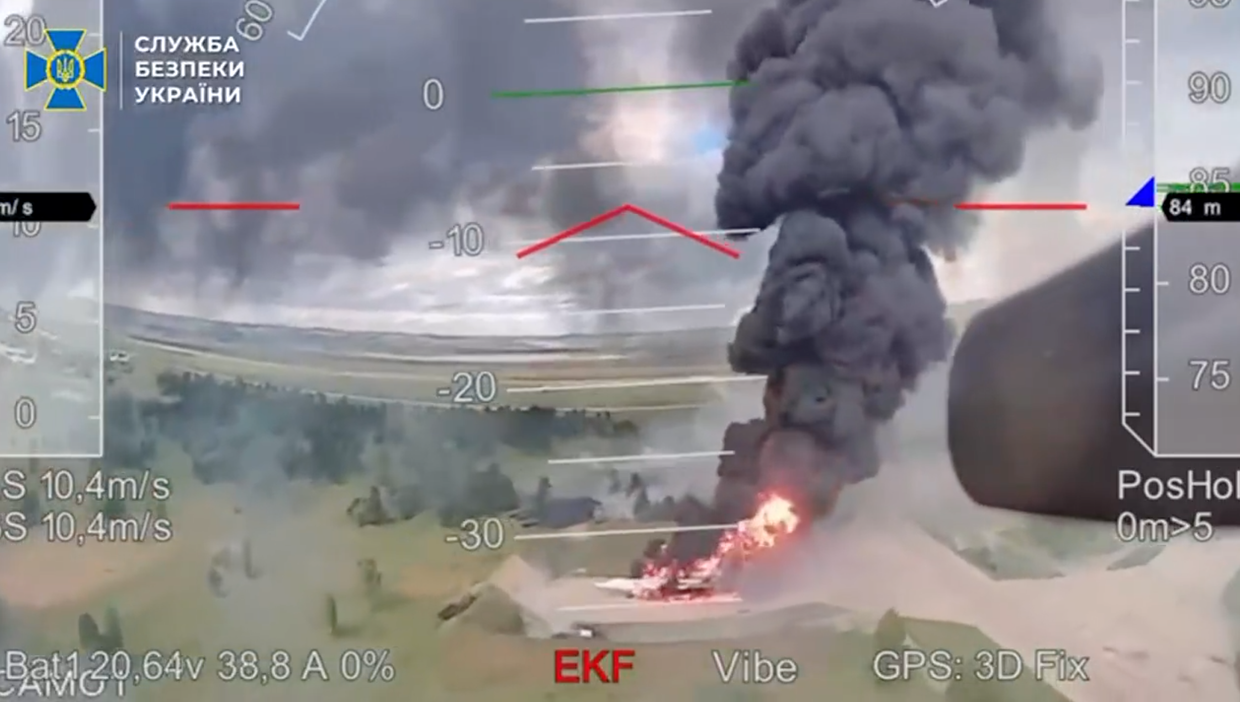
Ukraine denies Russian troop presence in Dnipropetrovsk Oblast amid offensive, describes situation as 'tense'Russian forces continue their efforts to break into Dnipropetrovsk Oblast, Ukraine's Southern Defense Forces reported on June 8, saying that the situation around the 31st Separate Brigade's positions remains "tense."
"The enemy has not abandoned its plans to enter Dnipropetrovsk Oblast," the Southern Defense Forces wrote on Telegram. "Our soldiers are bravely and professionally holding their section of the front, thwarting the occupier's plans."
The comment follows the Russian Defense Ministry's June 8 claim that its forces had entered Dnipropetrovsk Oblast.
Despite the claims, Major Andrii Kovalev, a spokesperson for Ukraine's General Staff denied Russian troop presence in the region.
"The information is not true. Fighting is ongoing in Donetsk Oblast. The enemy did not enter Dnipropetrovsk Oblast," Kovalev told Ukrainska Pravda.
In a separate statement to CNN, Viktor Trehubov, a spokesperson for for Ukraine's Khortytsia group of forces said that "the Russians are constantly spreading false information that they have entered the Dnipropetrovsk region from the Pokrovsk and Novopavlivka directions, but (in neither place) is this information true.”
The 31st Brigade is deployed in the Novopavlivka direction, where Donetsk, Zaporizhzhia, and Dnipropetrovsk oblasts converge. Since 2014, Russian aggression has heavily impacted Donetsk Oblast, while Dnipropetrovsk Oblast has remained free from direct incursions.
The denials from Ukraine's militaary come amid continuing Russian offensives in eastern and northern Ukraine, along with escalating diplomatic efforts that have yet to yield a ceasefire.
President Volodymyr Zelensky's Deputy Chief of Staff Pavlo Palisa said on June 6 that Russia aims to occupy all Ukrainian territory east of the Dnipro River and advance toward Odesa and Mykolaiv in a broader plan to sever Ukraine's access to the Black Sea, amid a renewed summer offensive.
On May 21, Ukrainian officials rejected similar claims that Russian troops had reached Dnipropetrovsk Oblast's administrative boundary.
Serhii Lysak, head of the regional military administration, called the reports "fake," citing doctored photos allegedly showing Russian soldiers in the area.
The Ukrainian monitoring project DeepState analyzed one such image and determined it had been taken in Troitske, a village in Donetsk Oblast.
As a precaution, Dnipropetrovsk Oblast began mandatory evacuations of children and families from four front-line villages in late April — Kolona Mezhova, Novopidhorodne, Raipole, and Sukhareva Balka — located just 5 to 15 kilometers from Russian positions.
Despite the lack of verified ground incursions, Dnipropetrovsk has endured frequent Russian missile, drone, and aerial attacks since the full-scale invasion began.
The ongoing Russian advance occurs as peace efforts remain stalled, and U.S.-brokered negotiations have failed to achieve a ceasefire.
Exchange of fallen soldiers’ bodies expected next week, official saysBudanov’s statement comes just a day after Russia claimed that a prisoner swap had failed due to Ukraine’s fault — an accusation Kyiv denied.The Kyiv IndependentTim Zadorozhnyy
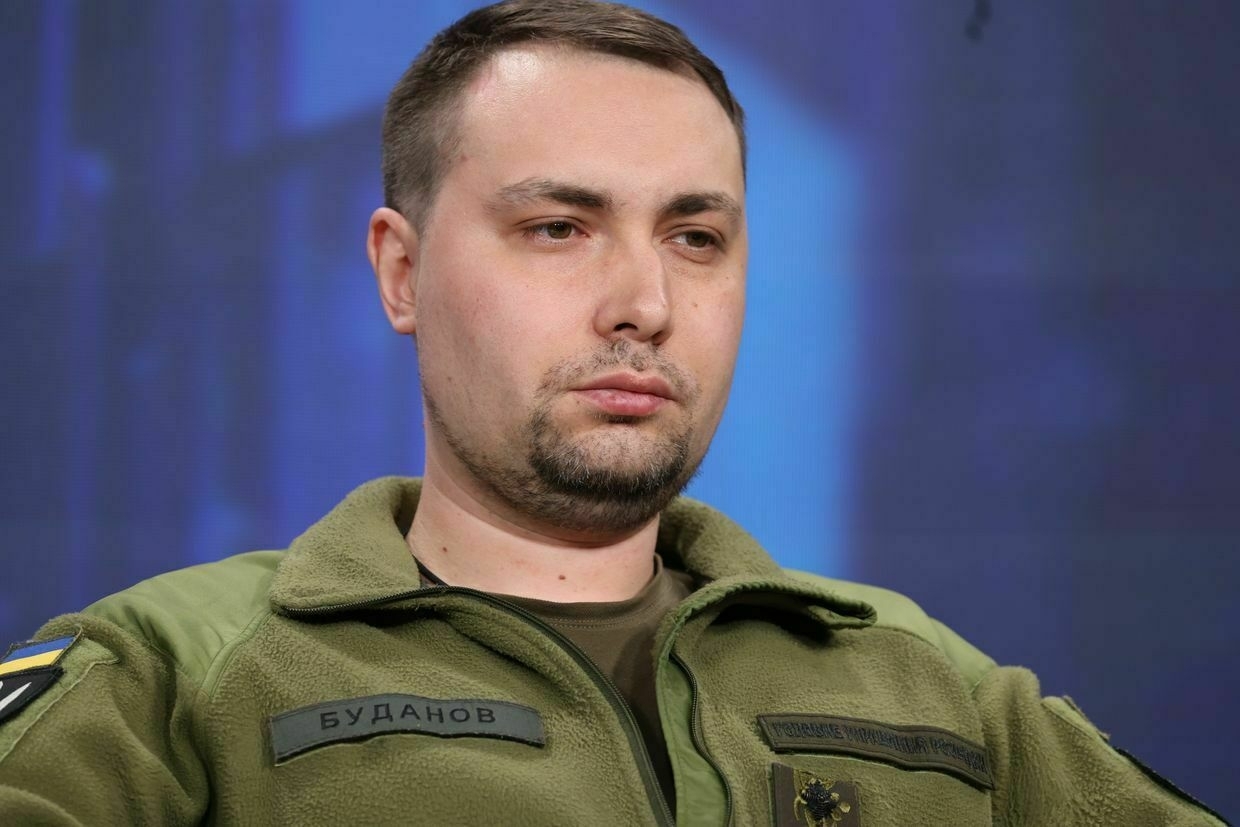
Trump administration redirects 20,000 anti-drone missiles meant for Ukraine, Zelensky confirmsZelensky confirmed that Trump's administration diverted 20,000 anti-drone missiles originally intended for Ukraine to American forces in the Middle East, in an interview with ABC News published on June 8.
Zelensky said Ukraine had counted on the missiles to help counter relentless Russian drone attacks, which include swarms of Iranian-designed Shahed-type drones. On June 1, Russia launched a record 472 drones in a single night.
"We have big problems with Shaheds… we will find all the tools to destroy them," Zelensky said. "We counted on this project — 20,000 missiles. Anti-Shahed missiles. It was not expensive, but it's a special technology."
Zelensky said the plan had been agreed upon with then-U.S. Defense Secretary Lloyd Austin and was launched under President Joe Biden's administration.
The Wall Street Journal reported on June 4 that the Trump administration had redirected the munitions, which include special fuzes used in advanced rocket systems to intercept drones, toward U.S. forces stationed in the Middle East.
The Pentagon reportedly informed Congress in a classified message that the reallocation of the fuzes for the Advanced Precision Kill Weapon System was deemed an "urgent issue" by current Defense Secretary Pete Hegseth.
A Ukrainian military intelligence (HUR) source told the Kyiv Independent on June 4 that Russia is preparing to launch more than 500 long-range drones per night in future attacks, as Moscow rapidly scales up drone production and constructs new launch sites.
The Trump administration has halted the approval of new military aid packages to Ukraine since the start of his second term in January.
Elon Musk’s father to attend pro-Kremlin event in Russia hosted by far-right ideologueAmong the forum’s panels are sessions titled “Russian Space: The Race for Mars” and “The Battle for Hearts and Minds: The Ideology of Sovereign Russia.”The Kyiv IndependentTim Zadorozhnyy
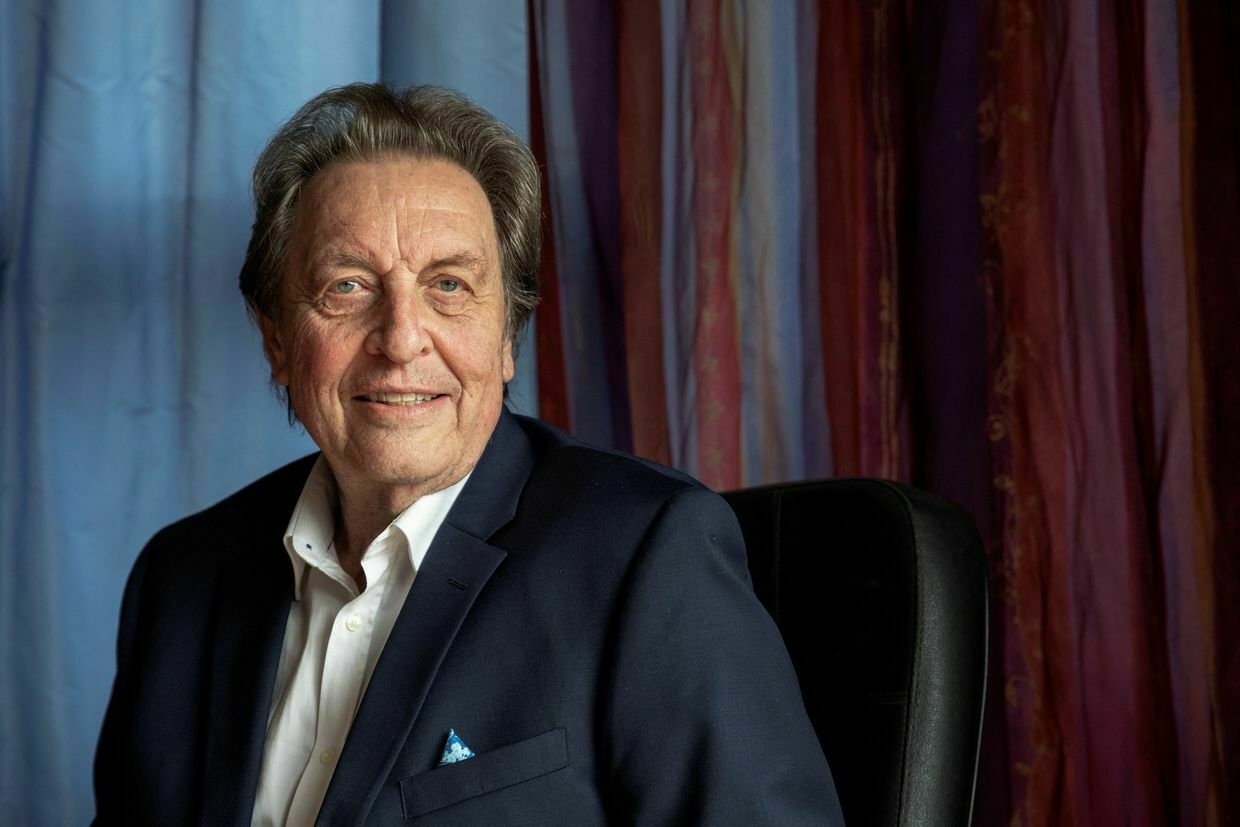
Ukraine downs fighter jet in Russia's Kursk Oblast, Air Force saysUkraine shot down a Russian Su-35 fighter jet in Russia's Kursk Oblast on the morning of June 7, the Air Force reported.
Although no details of the operation were disclosed, the downing brings the total number of Russian aircraft destroyed since the start of the full-scale invasion to 414, according to Ukraine's General Staff.
Ukraine launched a cross-border incursion into Kursk Oblast in August 2024, marking the first large-scale invasion of Russian territory by foreign forces since World War II.
Reinforced by North Korean troops, Russia launched a push to recapture the region in early March, with Ukraine being forced to pull back from much of the initially taken territory, including the town of Sudzha.
The downing of the Su-35 fighter jet also adds to the losses Ukraine has inflicted on the Russian Air Force over the past week during Operation Spiderweb.
Ukrainian drone attacks force airport shutdowns near Moscow, mayor saysRussia’s Defense Ministry claimed that 61 Ukrainian drones were launched between the evening of June 7 and the morning of June 8.The Kyiv IndependentTim Zadorozhnyy
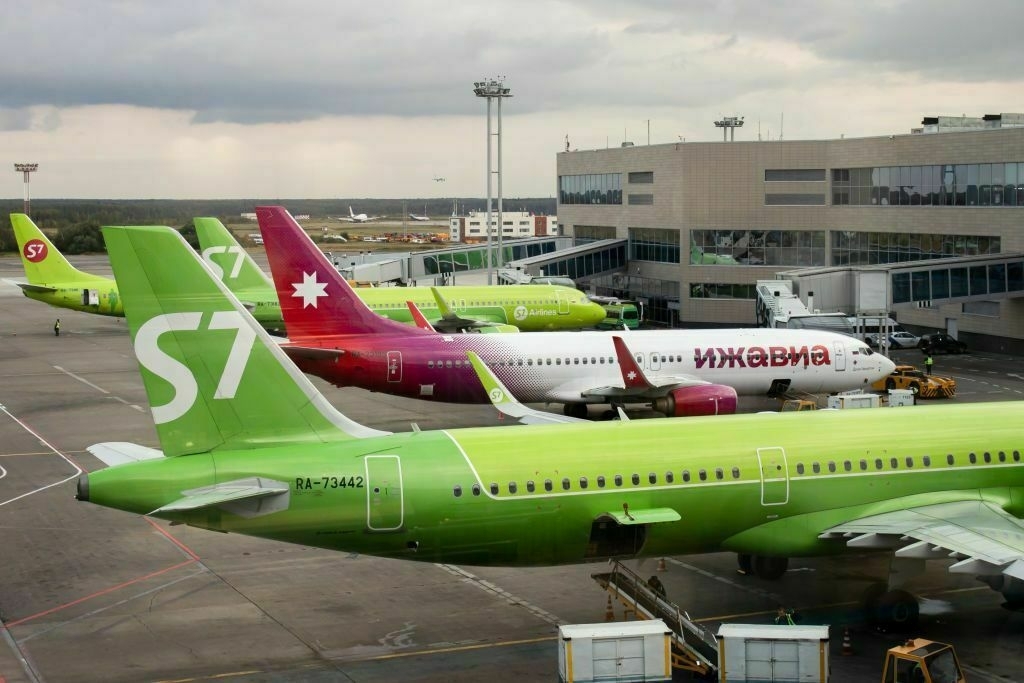
'I am against Ukraine's entry into the European Union,' Polish president-elect Nawrocki says"At the moment, I am against Ukraine's entry into the European Union," Polish President-elect Karol Nawrocki told Hungarian outlet Mandiner in an interview released on June 7.
"On the one hand, we must support Ukraine in its conflict with the Russian Federation, but Ukraine must understand that other countries, including Poland, Hungary, and other European countries, also have their own interests," he said.
Nawrocki won the second round of the Polish presidential election on June 1 with 50.89% of the vote. He has previously voiced opposition to Ukraine's membership in the EU and NATO, despite supporting Ukraine's sovereignty.
"Poland has such an interest, for example, in the exhumation of the Volyn (massacre) victims," Nawrocki said.
Polish and Ukrainian researchers began exhuming victims of the World War II era massacres on April 24 in Western Ukraine.
It was the first such exhumation since 2017, when Ukraine imposed a moratorium in response to the destruction of Ukrainian Insurgent Army (UPA) memorials in Poland.
"During the campaign, I did not agree, and as president, I will not agree, to unfair competition with Ukraine for Polish agriculture or the logistics sector," Nawrocki said.
EU tariffs on Ukrainian agricultural exports resumed on June 6, amid opposition to Ukrainian exports and its EU accession from eastern European members, including Hungary and Poland.
"I see Ukraine as a country that, although it is very bravely defending itself against the Russian Federation, must also respect the interests of other countries that otherwise support Ukraine," he said.
In contrast to other Eurosceptic leaders in Europe, including Slovak Prime Minister Robert Fico and Hungarian Prime Minister Viktor Orban, Nawrocki does not express pro-Russian views, but has repeatedly accused President Volodymyr Zelensky of taking advantage of allies.
Wondering where to start with Dostoevsky? Try his Ukrainian contemporaries insteadSince the start of Russia’s full-scale invasion of Ukraine in 2022, a growing debate has emerged over the cultural and political legacy of Russian literature — particularly the global reverence for classic Russian authors, which critics argue has long served to promote the imperial narratives embedded in their work. AsThe Kyiv IndependentKate Tsurkan

-
Slovakia will veto Russian sanctions if they harm national interests, Fico says
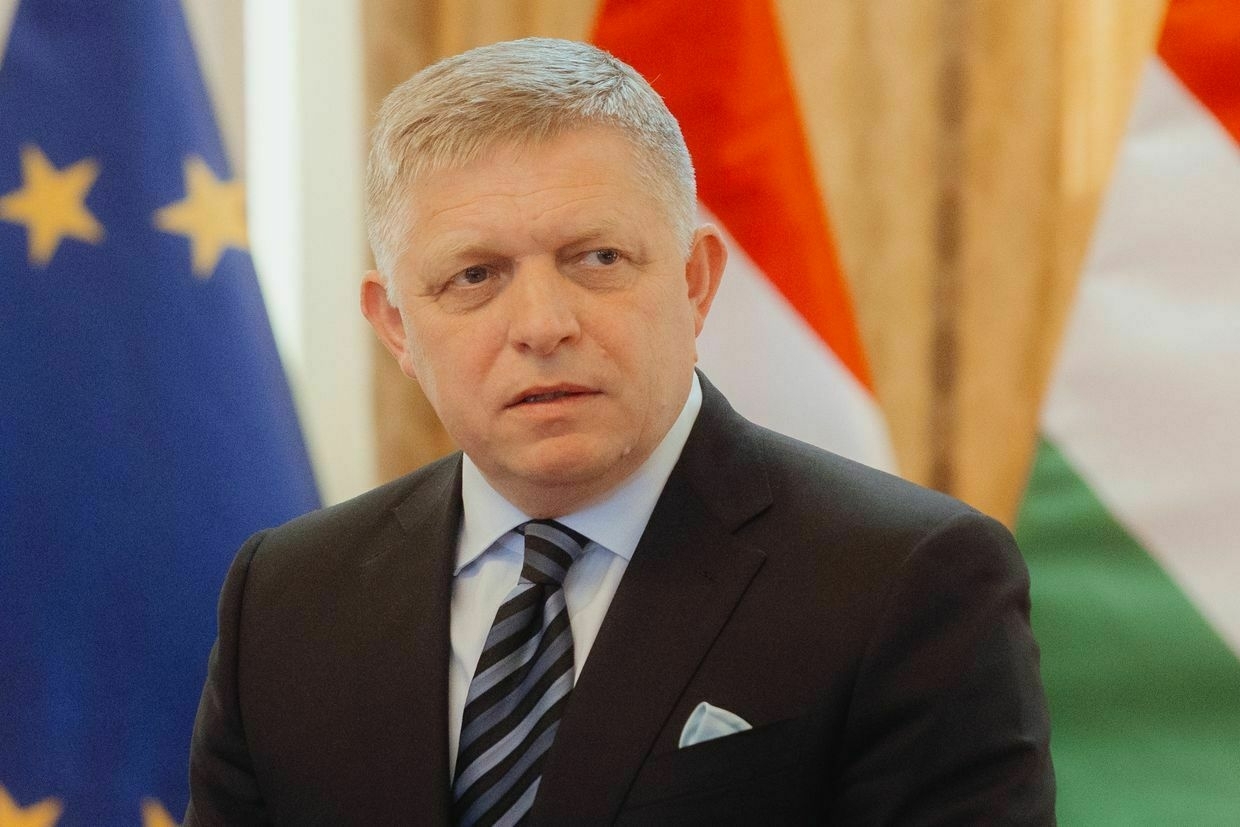
Slovak Prime Minister Robert Fico said on June 8 that Slovakia will block EU sanctions against Russia if they are deemed to harm the country’s national interests.
“If there is a sanction that would harm us, I will never vote for it,” Fico told reporters.
Fico’s comments come as Slovakia’s parliament passed a resolution on June 5 urging the government to oppose any new international sanctions or trade restrictions against Russia, citing alleged negative economic impacts.
The non-binding resolution argues that the sanctions imposed in response to Russia’s full-scale invasion of Ukraine have driven up energy prices, disrupted supply chains, and harmed Slovak industry.
The resolution calls on government ministers to “defend national economic interests” in international forums and resist further punitive measures targeting Moscow.
Since taking office in 2023, Fico has reversed Slovakia’s previous pro-Ukraine policy, ending military aid to Kyiv and questioning the value of EU sanctions on Russia.
EU foreign policy decisions, including sanctions, require unanimous approval by all member states. A Slovak veto could force concessions or delay enforcement in future rounds.
Unlike Ukraine-skeptic Hungarian Prime Minister Viktor Orban who has repeatedly obstructed and delayed the bloc’s sanctions against Russia and military aid for Ukraine, Slovakia has not previously attempted to block EU sanctions.
“I am interested in being a constructive player in the European Union, but not at the expense of Slovakia,” Fico said, without elaborating on how he will vote on any upcoming EU sanctions packages.
Fico added that he would not support any measure that halts Russian fuel imports that are used to power Slovakia’s nuclear power plants.
Discussions are underway as the EU is preparing an 18th sanctions package against Russia. EU ambassadors on May 14 agreed on the bloc’s 17th package of sanctions against Russia, primarily targeting its shadow fleet of oil tankers.
Ukraine’s European allies are tightening sanctions against Russia as Moscow refuses to cease fire. Despite Russia’s refusal, no new U.S. sanctions have been imposed so far.
After 3 years of full-scale war in Ukraine, Europe announces plan to ban all Russian gas importsAfter years of reducing its reliance on Russian gas, the European Union is moving to turn off the taps completely within the next two years. The European Commission (EC) on May 6 presented a detailed roadmap to fully sever the European Union’s energy dependence on Russia by 2027.The Kyiv IndependentAlex Cadier
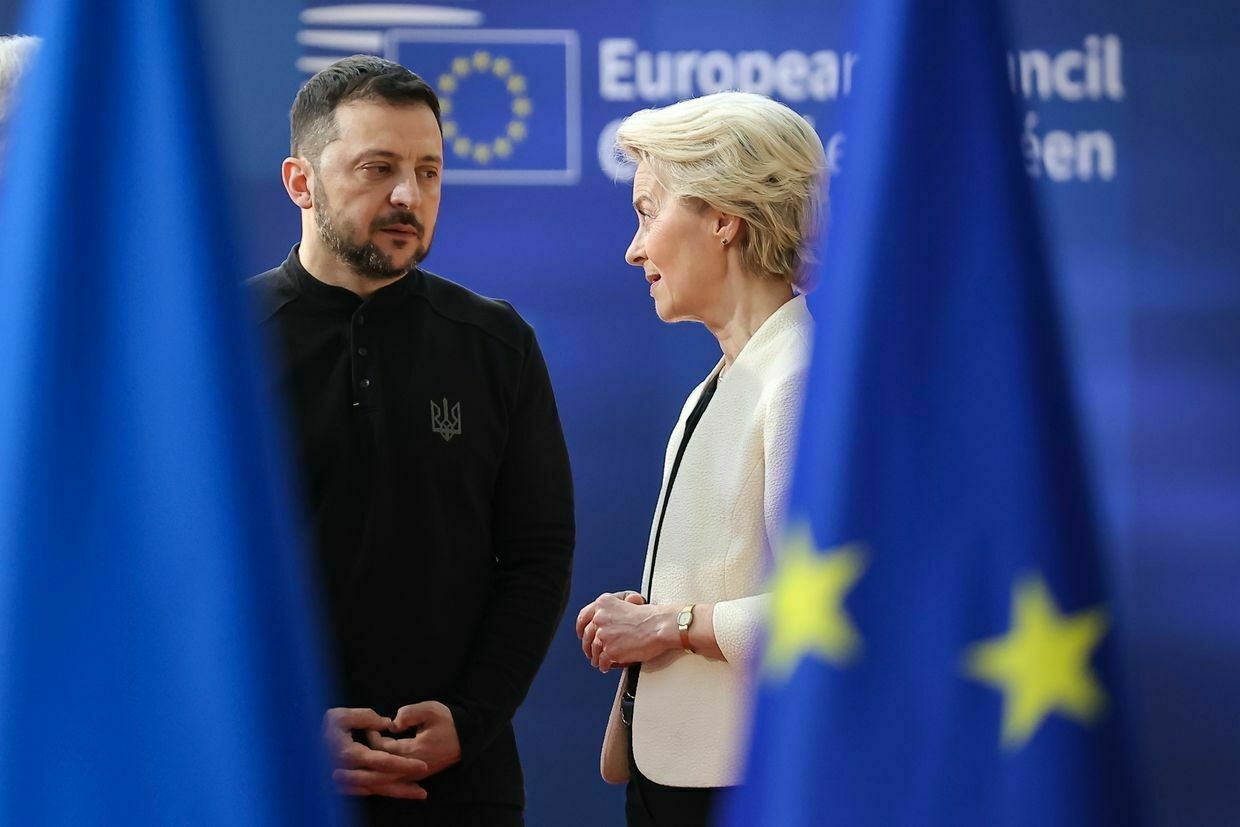
-
People will die! What will become of Ukraine without the help of the USA? #shorts
